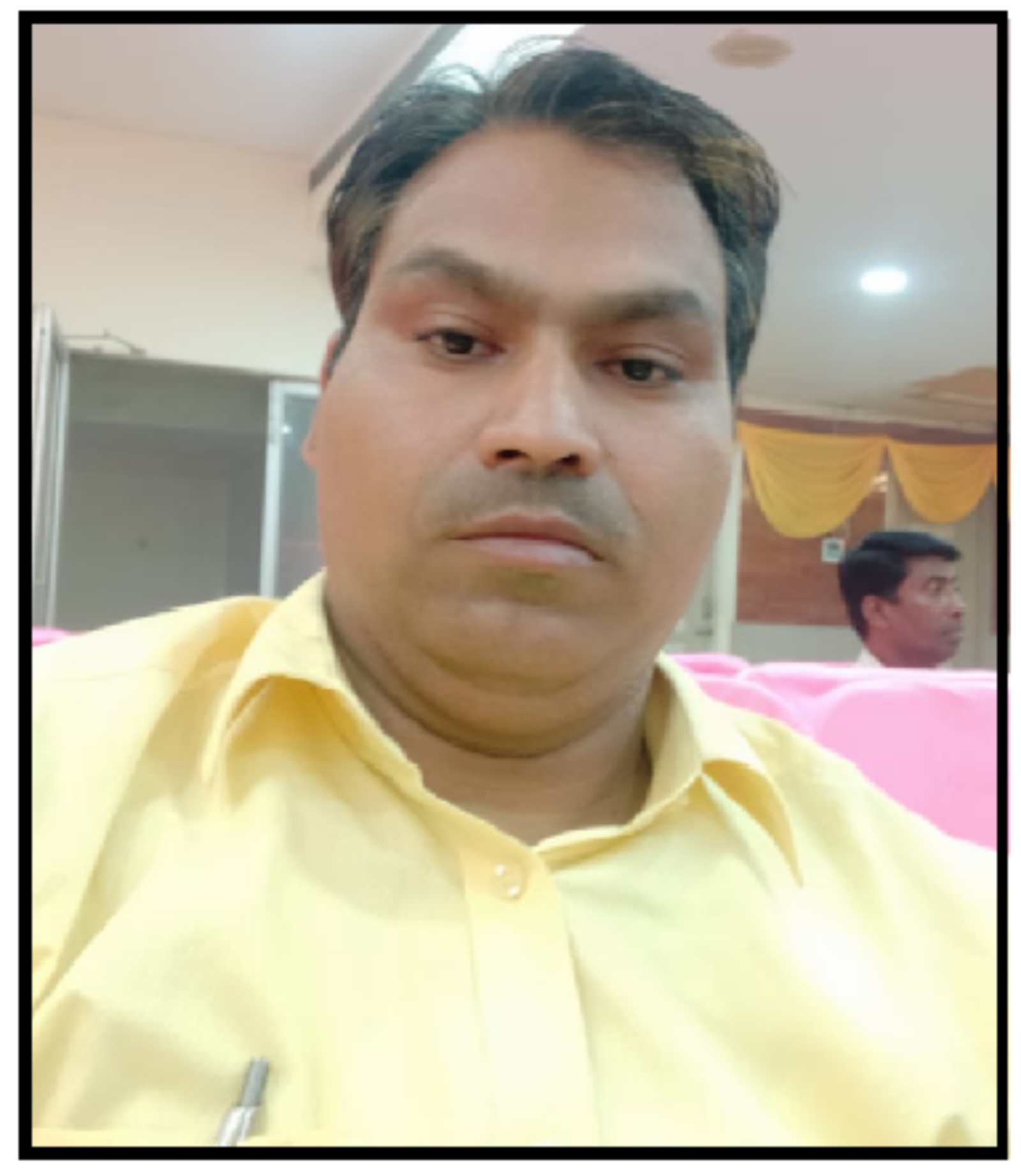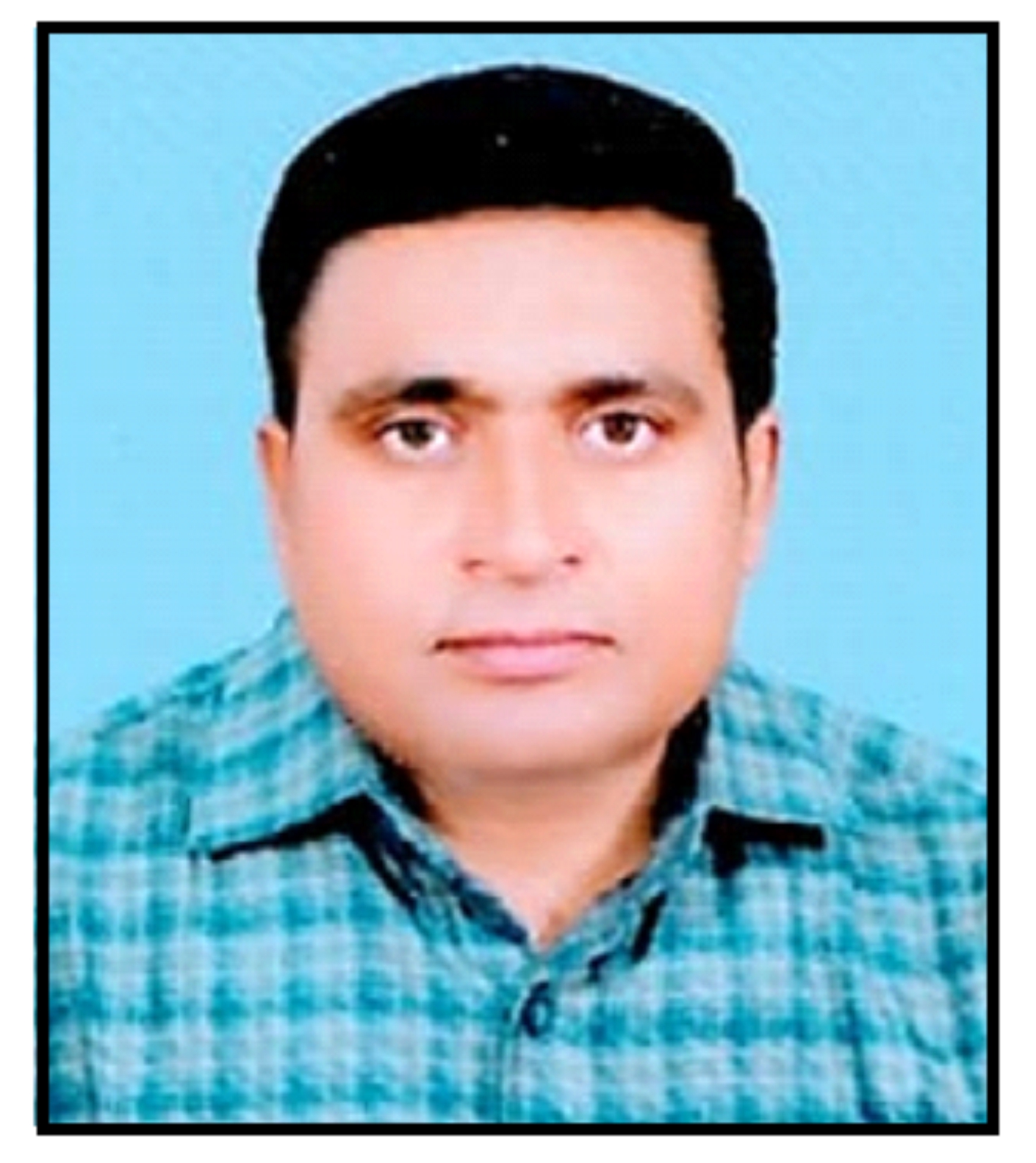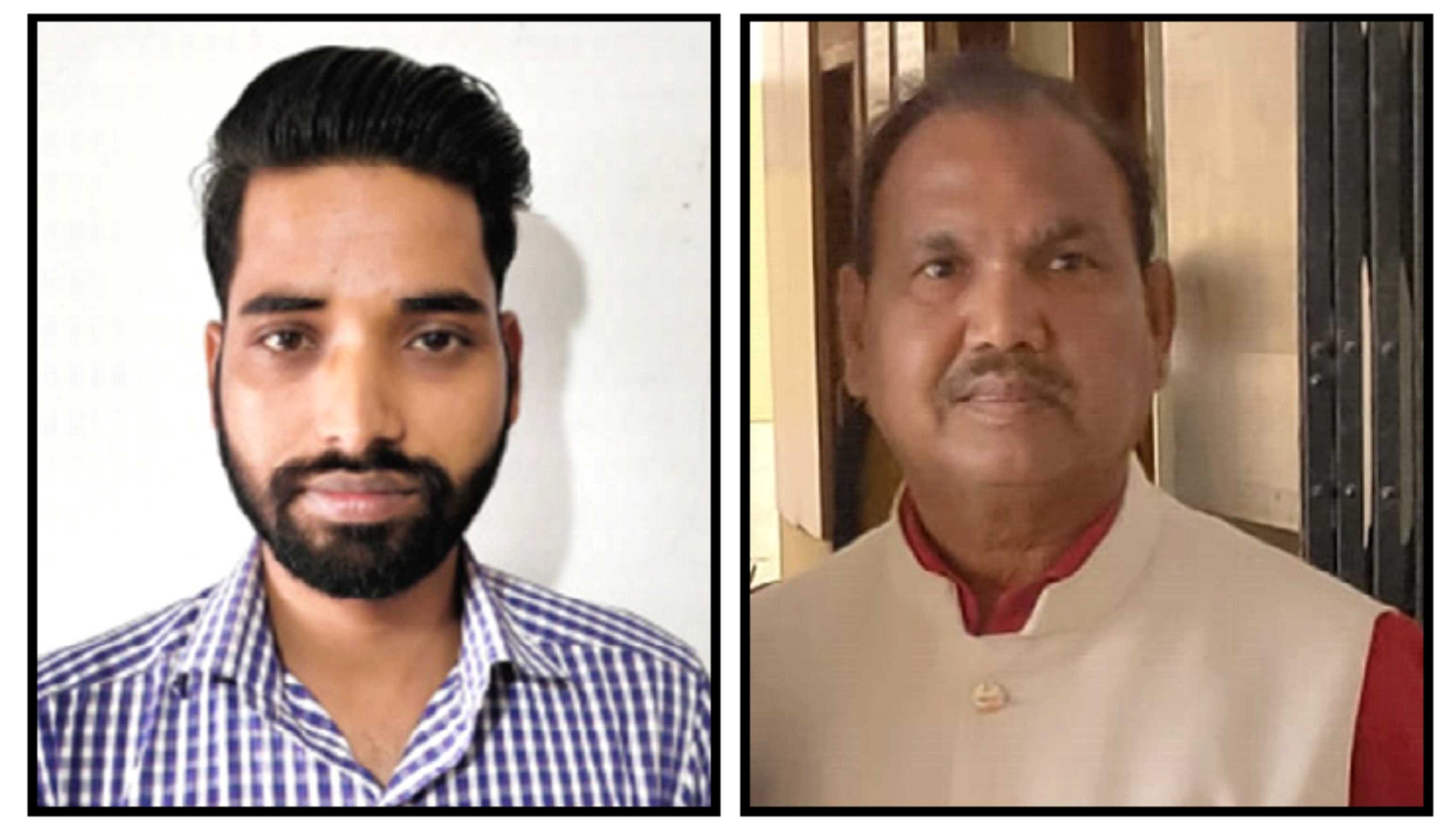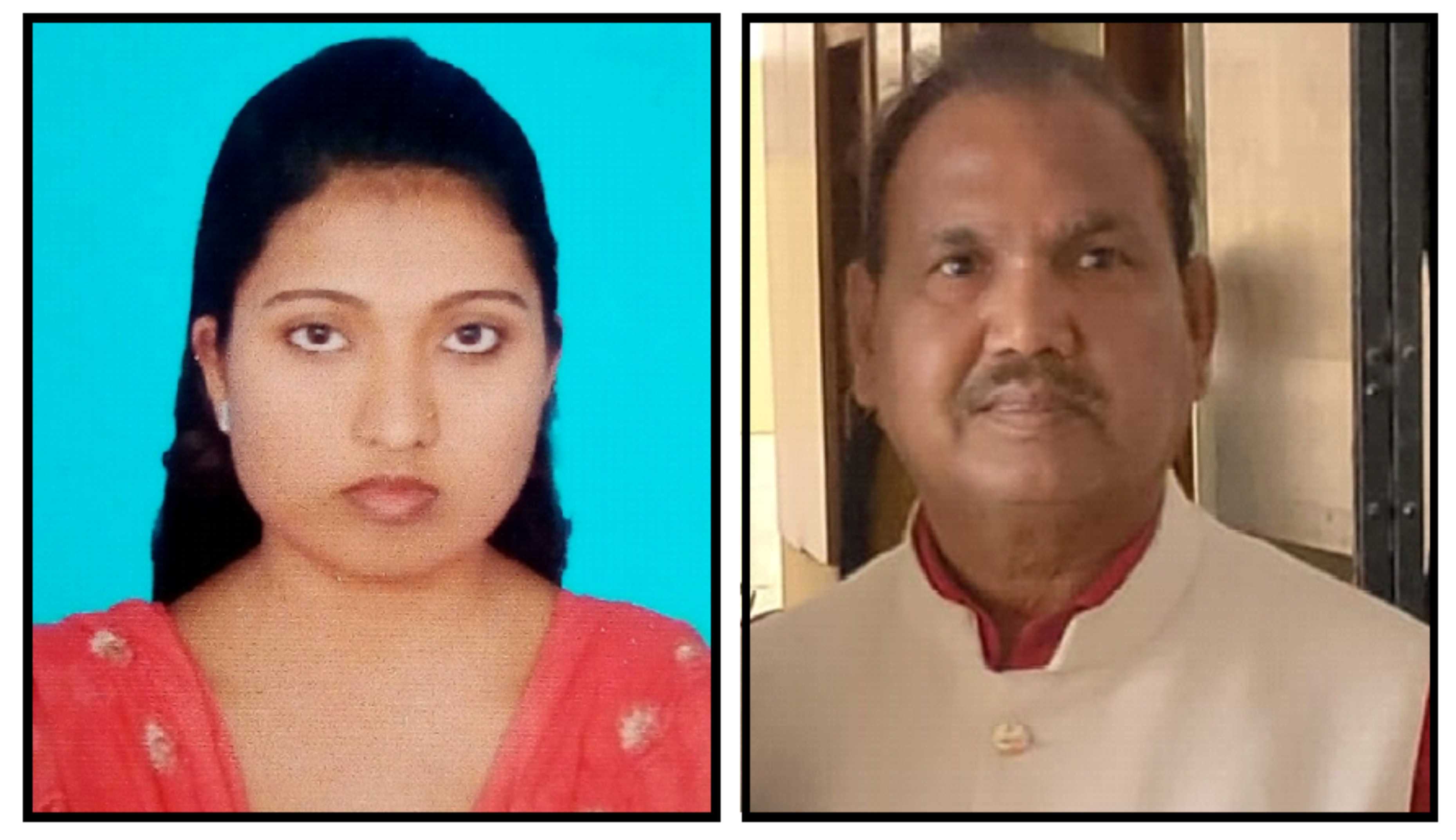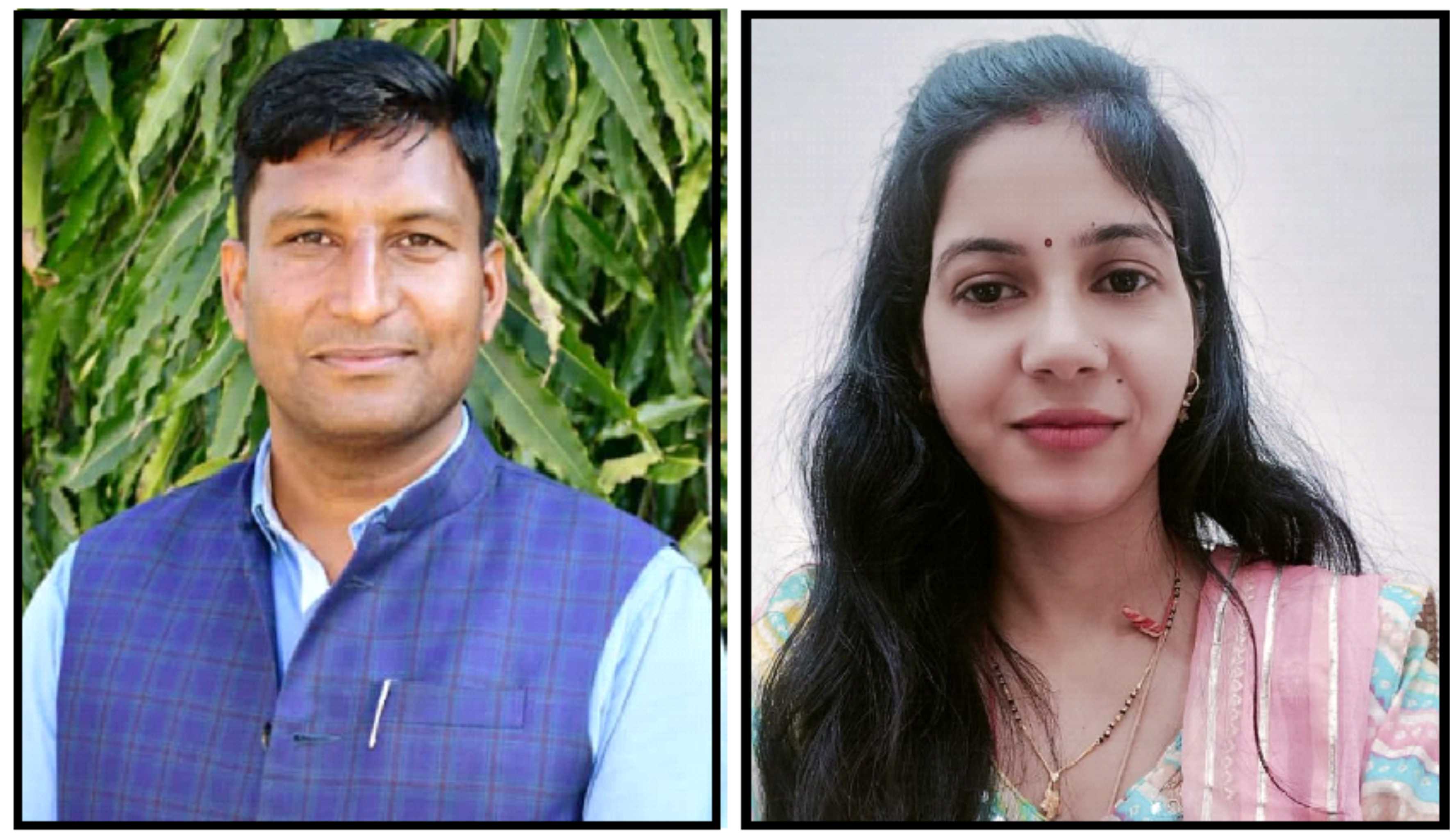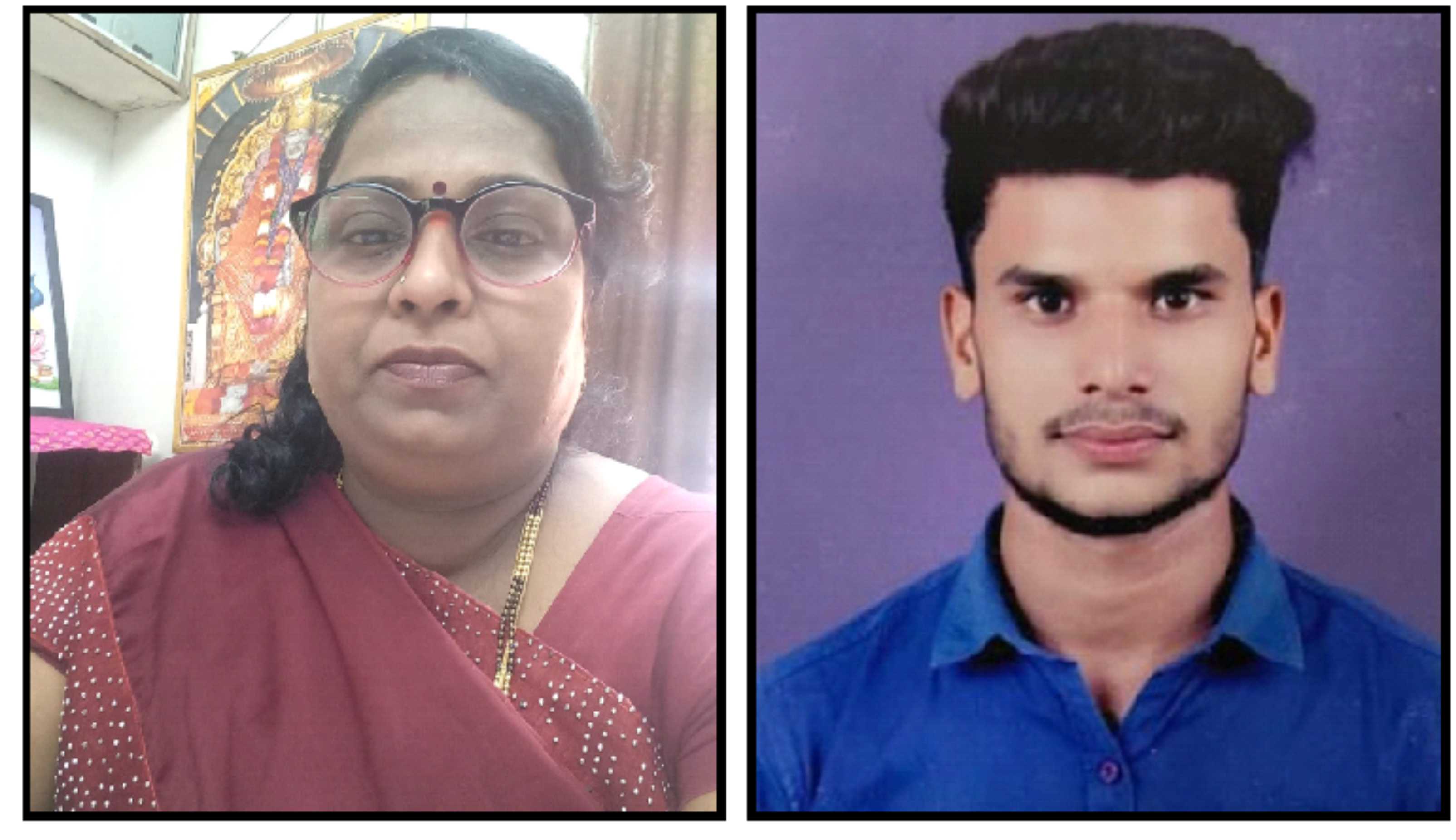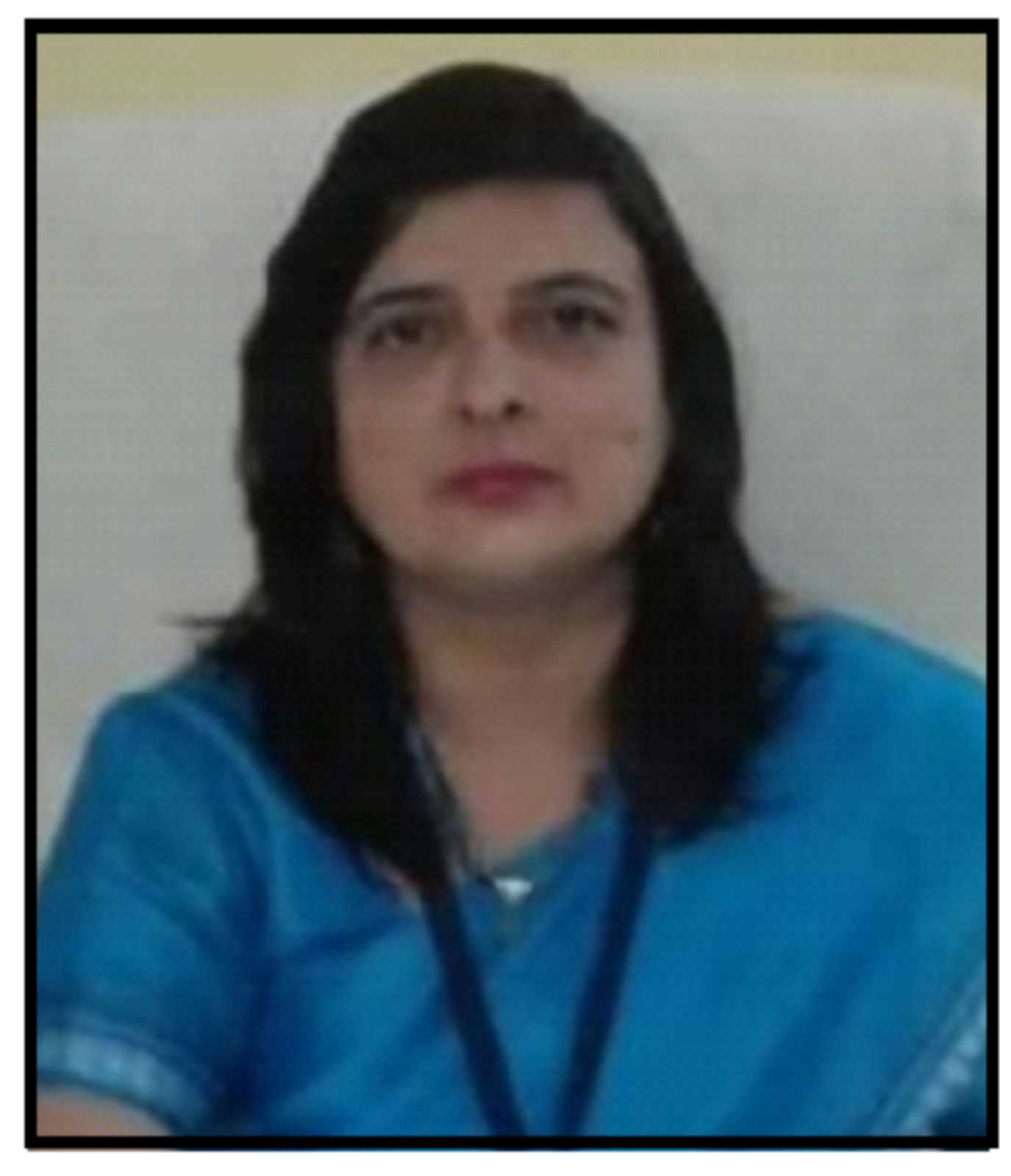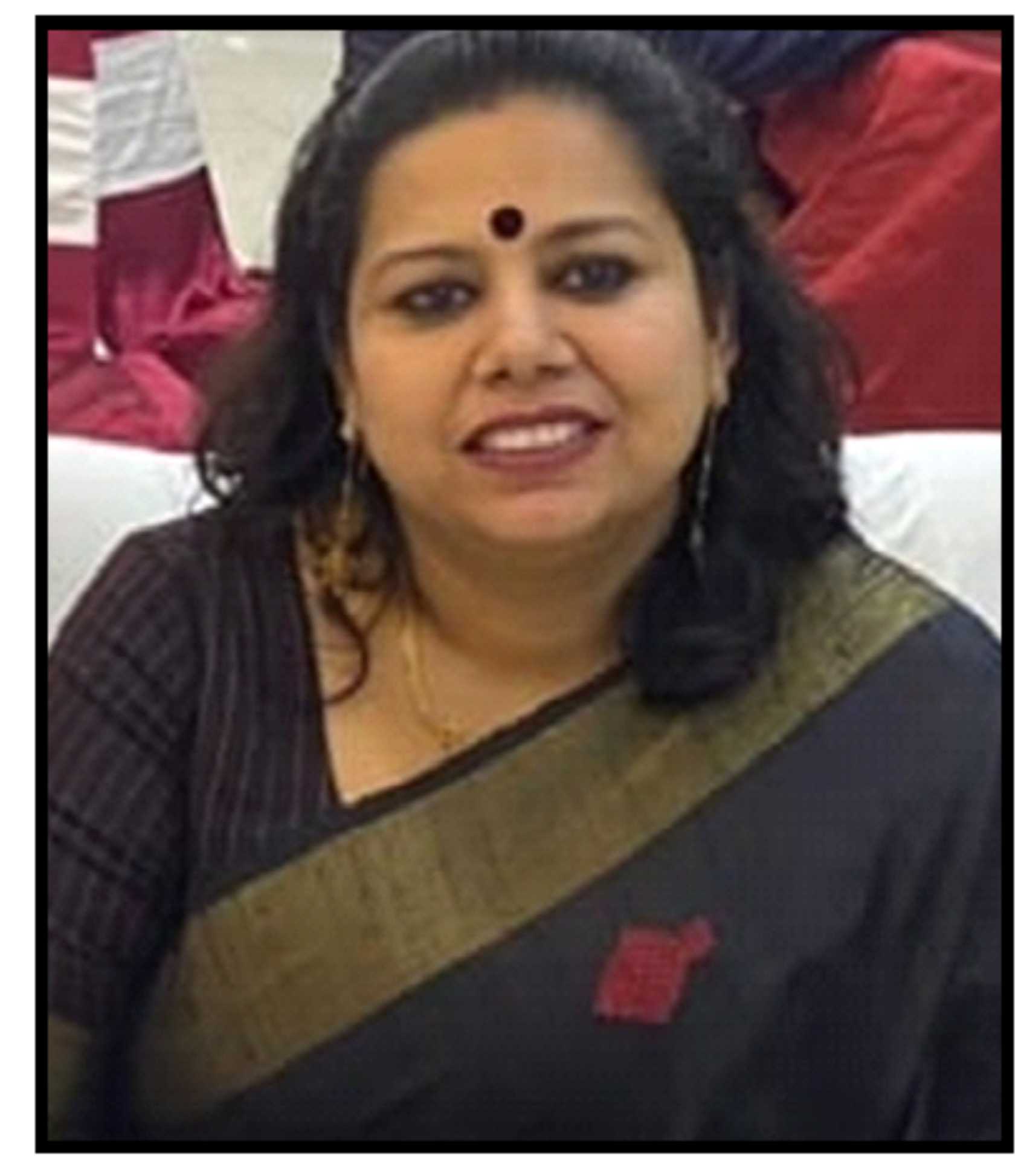- Call Us: +91 9425210308
- Email Us: shodhsamagam1@gmail.com
- RNI : CHHBIL/2018/77892
- ISSN : 2581-6918 (Online), 2582-1792 (Print)
Archieved Data
Publishing Year : 2023
Read Abstract
भारतीय संविधान में राज्यपाल का स्पष्ट प्रावधान न होने के कारण राज्यपाल का पद अक्सर विवादों से घिरा रहता है, चाहे यह विवाद उसके कार्यों से संबंधित हो या उसकी शक्तियों से संबंधित हो। राज्यपाल की नियुक्ति पूर्णतः राजनैतिक होती है, इसलिए इसे लेकर अलग - अलग दलों के नेता राजनीति करते हुए दिखाई पड़ते हैं। सुप्रीम कोर्ट ने विभिन्न निर्णयों के माध्यम से राज्यपाल पद के संबंध में उठने वाले विवादों को रोकने के लिए समय-समय पर दिशा निर्देश दिए हैं और इसके साथ ही कई आयोगों ने भी इन विवादों को रोकने के लिए अपनी सिफारिशें दी हैं। इस शोध पत्र का उद्देश्य राज्यपाल पद से संबंधित उठने वाले विवादों को जानना, उन विवादों के कारणों को जानना, उनका विश्लेषण करना तथा उनको दूर करने के उपायों को जानना है।
Read Keyword
वायसराय, मंत्रीपरिषद्, नौकरशाह, सुप्रीम कोर्ट, क्षेत्रीय राजनीति, पारदर्शिता.
Read Reference
1. https://www.drishtiias.com/hindi/daily-news-analysis/controversial_role_of_governors
Read Abstract
Drawing upon the principles of cognitive constructivism, social constructivism, cognitive distribution, social grouping, and peer groups, educators formulated the notion of peer learning as a pedagogical approach. When people of similar social standing interact, they learn from one another. The readiness of both students and their parents for peer learning is crucial to its success. Opportunities for peer learning and teaching that are guided by a competent educator are effective for students of varying abilities and backgrounds. The instructor has to understand the pedagogical principles at play here. The facilitator also needs to make sure they are well-versed in the various forms of peer tutoring. Both the teacher and the student in a peer learning situation should be conscious of this dual role. Peer learning and teaching opportunities have the potential to be a successful learning and teaching method when they are conducted correctly, with the necessary attention paid to avoiding errors. The primary objective of this work was to provide an outline of the peer learning strategy as it is described in the western perspective. Since this study is based on a literature review, we looked at books written about peer learning as well as related research papers and conference papers. The research strategy employed is content analysis. Content analysis-related data analysis takes place.
Read Keyword
Peer-Based Learning, Opportunities, Students, Peer Teaching.
Read Reference
1. Bond, L., Smith, T., Baker, W., Hattie, J. (2000). The Certification System of the National Board for Professional Teaching Standards: A Construct and Consequential Validity Study. NBPTS
Read Abstract
भावनात्मक बुद्धिमत्ता किसी व्यक्ति के व्यक्तित्व प्रोफाइल में उन तरीकों से योगदान करती है जिन्हें स्पष्ट रूप से समझा नहीं गया है। हालांकि हाल ही में तैयार किए गए, अवधारणा केवल पारंपरिक खुफिया भागफल की तुलना में अधिक मूल्यवान साबित हुई है। मौलिक स्तर पर, भावनात्मक बुद्धिमत्ता सुकरात के सिद्धांत “अपने आप को जानो“ द्वारा वर्णित राज्य को प्राप्त करने की एक तकनीक है। इस तरह का आँकलन इस तथ्य के आलोक में और अधिक आवश्यक हो जाता है कि अक्सर किसी व्यक्ति का आईक्यू उसकी व्यक्तिगत उपलब्धि के सदंर्भ में काफी अप्रासंगिक साबित होता है। इन मामलों की बारीकी से जांच करने से यह सिद्धांत सामने आएगा कि भावनात्मक बुद्धिमत्ता, जो किसी व्यक्ति की भावनात्मक और मनोवैज्ञानिक प्रोफ़ाइल से घनिष्ठ रूप से संबंधित है, एक अधिक विश्वसनीय सूचकांक है। विशेष रूप से, दूसरों को अपने दृष्टिकोण के बारे में समझाने, उन्हें उत्साहित करने और प्रेरित करने और मानव संसाधनों को संभालने की क्षमता जैसे गुणों का एक अच्छी तरह से परिभाषित तार्किक या गणितीय क्षमता के साथ बहुत कम संबध है। हम सामाजिक सगंठनों में जटिलता के एक चरण में पहुंच गए हैं जब बच्चों को भावनात्मक बुद्धिमत्ता कौशल को सचेत रूप से प्रदान करना होता है। भावनात्मक बुद्धिमत्ता द्वारा निभाई गई भूमिका के महत्व को पहचानने का समय निश्चित रूप से आ गया है। किसी भी शैक्षणिक सस्ं थान का मुख्य उद्देश्य अपने लोगों को स्वयं और राष्ट्र के विकास के लिए व्यक्ति की शारीरिक, मानसिक, भावनात्मक और बौद्धिक क्षमता और क्षमताओं को विकसित करने के उद्देश्य से विभिन्न प्रकार के सीखने के अनुभव प्रदान करना है। हालाँकि, यह देखा गया है कि हमारी शिक्षा प्रणाली संज्ञानात्मक विकास पर अधिक जोर देती है जो कभी-कभी किसी के सिर, हृदय और जीवन को नया रूप देने के लिए छात्र के सफल पहलुओं की कोई गारंटी नहीं देता है। इस सबंध में, भावनात्मक बुद्धिमत्ता वह विशेषता है जो व्यावहारिक कौशल सीखने की हमारी क्षमता को निर्धारित करती है जो किसी की भावनाओं को जानने, इसे प्रबंधित करने, स्वयं को प्रेरित करने, सहानुभूति विकसित करने और रिश्तों में अनुकूलता के तत्वों पर आधारित होती है। भावनात्मक बुद्धिमत्ता शिक्षकों, छात्रों और प्रशासकों को उपलब्धि बढ़ाने में मदद कर सकती है। बेहतर प्रदर्शन के लिए, झिझक पर काबू पाने, आत्मविश्वास का निर्माण, अपने आप में विश्वास करने, दूसरों के साथ सहानुभूति रखने और कई अन्य संबंधित कारकों के लिए एक अच्छी शिक्षण-अधिगम स्थिति के लिए भावनात्मक बुद्धिमत्ता के कौशल आवश्यक हैं।
Read Keyword
शैक्षणिक संस्थाएं, भावनात्मक, छात्र-छात्राएं, बुद्धिमत्ता कौशल.
Read Reference
1. अनुकुल एच., संजय डी. और उपिंदर डी., मैनुअल फॉर इमोशनल इंटेलिजंेस स्केल, लखनऊः वेदांत प्रकाशन, 2021।
Read Abstract
In the digital age, e-Governance has emerged as a critical avenue for Governments worldwide to enhance service delivery and engage citizens effectively. However, implementing successful e-Governance initiatives comes with its own set of challenges and complexities. This abstract explores the issues and strategies associated with e-Governance, shedding light on the key factors influencing its implementation and providing insights into practical strategies for addressing these issues. The first section of the abstract examines the challenges faced in implementing e-Governance initiatives. These challenges include infrastructure limitations, such as inadequate connectivity and the digital divide, which hinder access to digital services for all citizens. Additionally, issues like data security and privacy concerns, the need for interoperability between different Government systems, and resistance to change within bureaucratic structures pose significant hurdles in adopting e-Governance. The second section focuses on the strategies that can be employed to overcome these challenges and ensure the successful implementation of e-Governance. It highlights the importance of developing robust digital infrastructure, including broadband connectivity, to enable widespread access to online services. Furthermore, establishing strong data protection measures and privacy frameworks is essential to gain public trust and ensure the security of personal information. Promoting interoperability and data sharing between Government departments can enhance efficiency and streamline service delivery. Additionally, fostering a culture of innovation, along with capacity building and training programs for Government officials, can facilitate the smooth transition towards e-Governance. Lastly, the abstract discusses the role of citizen engagement in e-Governance. Encouraging the active participation of citizens through digital platforms can enhance transparency, accountability, and inclusivity. It emphasizes the need for user-centric design and the adoption of citizen feedback mechanisms to ensure that e-Governance initiatives align with the needs and expectations of the population.
Read Keyword
e-Governance, Digital Divide, Data Security, Privacy concerns, Integration, Digital infrastructure.
Read Reference
1. Bhatnagar, Subhash, and John D. Kelleher. “Digital Government: A Global Perspective.” In Public Administration and Public Policy, edited by Subhash Bhatnagar and John D. Kelleher, CRC Press, 2021, pp. 1-20.
Read Abstract
The role of a teacher in imparting education to students is very challenging and full of responsibility. The teacher has been considered to look after the student at school as the parents look after the child at home. Since the quality of a teacher in an educational system is more important factor than all other factors put together as it is essential that an individual who is considered teaching as a career should understand what is required for him and know whether he possesses the interest and competence to success in the field of teaching. According to H.G.Wells “The teacher is the pivot of the educational system .” There is need of really good teachers who have some unique qualities about them. In India we don’t need such teachers who consider imparting of information to be their only duty. They are also expected to act as social reformer, moralist, national integrator etc. The teacher is an important figure and is expected to remain important. In the words of Kabir given below we find that the teacher has been compared with God, to bring home his importance. “Teacher and God, both are standing before me to who should I pay obeisance? I bow to you, my teacher Who guided me to God.” Secondary Education Commission (1952-53), chairman, Dr. Lakshmana Swamy Mudaliar put forward the following view point, that the most important pillar in educational reconstruction is a teacher, his/her personal qualities, his/her educational qualifications, his/her professional training and place that he/she occupies in the school and in community. The teacher is solely responsible for the reputation of a school and its participation in the society.
Read Keyword
School, Teacher, Training, Job Satisfation.
Read Reference
1. Agarwal K. G., (1988) Manual for work motivation Questionnaire. Agra National Psychological Corporation.
Read Abstract
Modern consumer behaviour models are frequently built on data mining of customer data, and each model is created to provide a specific response to a specific inquiry at a specific moment. It can be challenging and uncertain to predict client behaviour. Thus, choosing the appropriate method and strategy is essential when creating consumer behaviour models. It is challenging to alter a prediction model once it has been created for marketing reasons in order to decide precisely what marketing actions to take for each customer or group of customers. Despite this formulation’s complexity, the majority of customer models are actually quite straight forward. Due to this necessity, the majority of consumer behavior models overlook so many important variables that the forecasts they produce are typically not particularly accurate. Using a typical online retail store as a data source, this article seeks to construct an association rule mining model to forecast consumer behavior and identify significant trends from the customer behavior data.
Read Keyword
Association Rule Mining, Apriori, Digital Market, Consumer Behavior, Machine Learning.
Read Reference
1. Bose, R. (2009). Advanced analytics: Opportunities and challenges. Industrial Management & Data Systems 109(2):155-172.DOI: 10.1108/02635570910930073
Read Abstract
विज्ञान, वाणिज्य और कला के विभिन्न विषयों में पिछले कुछ वर्षों में उच्च शिक्षा प्रणाली तेजी से बढ़ी है। ई-संसाधनों और सूचना प्रौद्योगिकी ने भारत में उच्च शिक्षा प्रणाली में तेजी से बदलाव लाए हैं। ई-संसाधन शिक्षण-अधिगम और अनुसंधान के लिए मूल्यवान उपकरण हैं। यह शैक्षिक उद्देश्यों को पूरा करने में उच्च शिक्षा का सहायक स्तंभ है। शिक्षा और अनुसंधान में ई-संसाधनों तक पहुँचने के लिए वेबसाइट और इंटरनेट सेवाएँ महत्वपूर्ण उपकरण हैं। आईसीटी के इस युग में अकादमिक पुस्तकालयों और सूचना केंद्रों ने वैश्विक सूचना वातावरण को तेजी से बदल दिया है। भारत में विभिन्न उच्च शिक्षा संस्थान और केंद्र ई-संसाधनों की सदस्यता ले रहे हैं। भारतीय प्रणालियों ने उपयोगकर्ता की आवश्यकता को पूरा करने के लिए ई-संसाधनों की सदस्यता लेना शुरू कर दिया है। इस शोध पत्र में उच्च शिक्षा के लिए अपनी गति से अधिक सीखने के लिए एक सशक्त और सक्षम वातावरण का अनुकरण दिया गया है। यह अध्ययन ई-संसाधनों के अवसरों और चुनौतियों की झलक दिखाता है जिन्हें कहीं से भी और कभी भी उपलब्ध कराया जा सकता है। शिक्षा की उच्च गुणवत्ता और ई-संसाधन के उपयोग में सुधार के लिए अनुसंधान उच्च शिक्षा के सबसे महत्वपूर्ण घटकों में से एक है।
Read Keyword
ई-संसाधन, शिक्षा, समाज.
Read Reference
1. https://www.ugc.ac.in/oldpdf/consolidated%20list%20of%20All%20universities.pdf
Read Abstract
Swami Atmanand was a prominent socio-political and religious philosopher from Chhattisgarh, India. He was a spiritual leader who dedicated his life to the betterment of society and the upliftment of the underprivileged. His philosophy was based on the principles of non-violence, social justice, and religious harmony. Swami Atmanand believed that true spirituality lies in serving humanity and working towards the betterment of society. He was a strong advocate of non-violence and believed that violence only leads to more violence. He believed that people should solve their problems through peaceful means and dialogue. In terms of social justice, Swami Atmanand believed that every person, regardless of their caste, creed, or religion, deserves equal rights and opportunities. He strongly opposed discrimination and believed in the empowerment of marginalized communities. He believed that education and awareness were essential for achieving social justice. Religious harmony was also a crucial aspect of Swami Atmanand’s philosophy. He believed that all religions were different paths to the same goal and that people should respect each other’s faith. He advocated for interfaith dialogue and believed that mutual understanding and respect were essential for achieving religious harmony. Overall, Swami Atmanand’s socio-political and religious philosophy was focused on creating a just and harmonious society where people could live together in peace and prosperity. His teachings continue to inspire people in Chhattisgarh and beyond to work towards a better future for all.
Read Keyword
Swami Atmanand, Socio-political, Religious Philosophy, Non-violence, Education, Underprivileged.
Read Reference
1. Atmanand, Swami. “Non-violence: A Way of Life.” Philosophy Today, vol. 57, no. 2, 2013, pp. 141-149.
Read Abstract
संत अभिराम परमहंस भारतीय आध्यात्मिक दिगवलय़ में एक ऐसा चन्द्रमा है, जिनके पावन किरणों से भक्ति और दिव्य भावना का आभास होता है। ओड़िशा राज्य का पुरी जिला अन्तर्गत करमला गांव में जन्मी इस योगजन्मा संत-साधु ने भारतीय स्वाधीनता आंदोलन में अपने योगदान देकर एक नई दिशा और पहचान बनाया। ब्रिटिश शासित भारतवर्ष में भारतीय जनता का दुःख, दुर्दशा और यन्त्रणा को देखकर वे न केवल आहत हुए थे, बल्कि इस अन्याय, अत्याचार का विरोध करके अंग्रेजों के बारे में अपने प्रतिवाद जताई साहित्य के माध्यम से। ’कलि भागवत’ उस का सर्वश्रेष्ठ निदर्शन है। ओड़िआ भाषा में शरीर तत्व और पिंडब्रह्माण्ड रहस्य को व्यक्त करने में सांकेतिक भाषा एवं शब्दो में अभिराम ने देशात्मबौधक प्रतिवेदन जताई जिसको लेकर उनको व्रिदोही और देशद्रोही आरोप लगाया गया। ब्रिटिश सरकार ने देशद्रोह कार्य करने का परिणाम स्वरूप अभिराम परमहंस को गिरफ्तार करके जेल भेज दिया। लेकिन स्वाभिमान संत साधू इस स्थिति में अविचल रहकर खुशी मनसे कारावास को अपनाया। समग्र भारतवर्ष में अरविंद के उपरांत अभिराम एकमात्र ऐसा संत थे, जिसने भारतीय स्वाधीनता आंदोलन में योगदान देकर कारावास स्वीकार किया था। ’कलि भागवत’ आज भी ओड़िआ साहित्य और ओड़िशा के आध्यात्मिक परिमंडल में अपना स्वतंत्र आसन सुरक्षित रखा है।
Read Keyword
ओडिसा, सेनाना, साधु, साहित्य, आंदोलन.
Read Reference
1. रचनाबली अभिराम, श्री अभिराम परमहंसदेव, श्रीशांति आनंदाश्रम सेवासंघ, करमला, पुरी, 2009।
Read Abstract
रामानुज के अनुसार आत्मा ही ज्ञान का आधार है। ज्ञान ही आत्मा का स्वरूप है, आत्मा स्वभाव से ही चित् रूप में विद्यमान है। हमारे शरीर से जुड़े होने के कारण आत्मा समस्त कर्मों को करता है जिसके अनुसार अच्छे बुरे फलों को प्राप्त करता है। रामानुज के अनुसार आत्मा नित्य है, जबकि शरीर, इंद्रियां आदि सभी अनित्य है। रामानुज के अनुसार आत्मा इस जगत के सभी प्राणियों में विद्यमान है इसलिए हम आत्मा को अनेक मानते हैं। रामानुज के अनुसार आत्मा ही जीवात्मा है साधारणतः मनुष्य आत्म तत्व को समझने में असमर्थ है। भ्रांति वश मनुष्य मन बुद्धि और इंद्रियों को ही सब कुछ मान लेता है किंतु जब मनुष्य अंतर्मुखी होता है, तब वह परमात्मा की कृपा से आत्मदर्शन कर पाता है।
Read Keyword
रामानुज, आत्मा, ज्ञान, इंद्रियां.
Read Reference
1. श्री भाष्य, ज्ञातृत्वमेव जीवात्मास्वरूप-1, 2-3-31।
Read Abstract
साहित्य विचारों, भावनाओं और अनुभवों को व्यक्त करने एक माध्यम है। हिन्दी साहित्य लेखन सामाजिक सरोकार, यथार्थवाद और आम आदमी की समानता को प्रदर्शित करता है, और साथ ही अपने अतीत के यथार्थ को भी जीवंत रखता है। इसी कड़ी में राधाचरण गोस्वामी (1859-1925) एक मानवतावादी हैं और मानवता के लिए गहरी बौद्धिक चिंता रखते हैं और उनका लेखन सामाजिक रूप से स्थापित और उपाश्रित वर्ग का शक्तिशाली दस्तावेज है। साथ ही वे प्रभुत्वशाली वर्गों से अधीनस्थ वर्गों के अन्तर्विरोधों और द्वन्द्वों का आख्यान रचनेवाली कथादृष्टि की सामाजिक पक्षधरता की भी जाँच-परख करते हैं। उपाश्रित इतिहास-दृष्टि की मदद से राधचरण गोस्वामी के लेखन में किसानों, दलितों, स्त्रिायों और अन्य अधीनस्थ वर्गों की उपस्थिति-अनुपस्थिति और उनकी यातना, सामाजिक सजगता तथा संघर्षशीलता की पहचान को आख्यानो में किस तरह अपनी रचनों में दर्ज करते है। यह शोध पत्र यह पता लगाने की कोशिश करता है कि राधाचरण गोस्वामी के साहित्य लेखन के संदर्भ में उपाश्रित शब्द कैसे लागू होता है और उपाश्रित वर्ग की आवाज को किस तरह व्यक्त करता है।
Read Keyword
उपाश्रित, साहित्य, सामाजिक, अभिलेखगार, औपनिवेशिक.
Read Reference
1. गोस्वामी राधाचरण, व्यक्तित्व तथा कृतित्व, डां. केदारदत्त तत्राडी़, प्रकाशक चैतन्य गोस्वामी, वृंदावन 1995।
Read Abstract
प्राचीन वैशाली के विकास में कृषि ने सर्वाधिक महत्वपूर्ण भूमिका निभाई है। छठी शताब्दी ई. पू. में कृषि के क्षेत्र में हुए लोहे के प्रयोग ने भौतिक एवं सामाजिक ढ़ाँचे को ही बदल दिया। कृषि की महत्ता एवं उपयोगिता के कारण ही बुद्ध अपने कार्यक्षेत्र को तत्कालीन कृषि को प्रोत्साहित एवं सुरक्षित करने के लिए उन्नत कृषि हेतु अनिवार्य उन्नत पशुओं के हित में यज्ञ और भोजन में पशु मांस के व्यवहार के कारण होने वाली पशुधन क्षति को रोकते हैं। उन्होंने उनके प्रति अहिंसा पर बल देते हुए कहा कि ‘‘अन्नद, वनद और सुखद’’ है।1 यर्थात् पशुओं की हत्या नहीं हो। गंगा और गंडक की तटवर्ती वैशाली की कृषिजन्य सामाजिक और आर्थिक संपन्नता ने गौतम बुद्ध को काफी आकर्षित किया।
Read Keyword
पशुधन, कृषि, गणतंत्र, बौद्ध साहित्य, पाणिनी केदार, उदंचन.
Read Reference
1. सुत्तनिपात (वाराणसी संस्करण), ब्राह्यण धम्मिक सुत्तम, 13-13, पृ.74.
Read Abstract
छत्तीसगढ की एक तिहाई जनसंख्या अनुसूचित जनजातियों की है। इन्हे आदिवासी, वनवासी, गिरीजन, भूमिजन वन्य जाति तथा जनजाति भी कहते है। छत्तीसगढ़ में निवासरत जनजातियों में प्रमुख कमार, अबुझमाड़िया, पहाडी कोरवा बिरहोर और बैगा को विशेष पिछड़ी जाति के रूप् में भारत सरकार द्वारा मान्य किया गया है। देश के कुल अनुसूचित जनजातियों का 8.44 प्रतिशत जनसंख्या छत्तीसगढ़ में निवासरत है जो राज्य की कुल जनसंख्या का 31.76 प्रतिशत है। मनुष्य स्वभावतः एक सामाजिक प्राणी है तथा वह अपने शारीरिक अस्तित्व को बनाये रखने के लिए कुछ आर्थिक सामाजिक एवं सांस्कृतिक आवश्यकताओं में सबसे आधारभूत है भोजन, वस्त्र और मकान। जनजाति वह समूह है जो सभ्यताकाल के जीवन प्रतिमानों से संबंधित है और इनमें अनेक विभिन्नताएं पाई जाती है। अध्ययन का प्रमुख उदद्ेश्य छत्तीसगढ़ की प्रमुख जातियों एवं जनजातियों का सामाजिक आर्थिक एवं सांस्कृतिक अध्ययन करना है तथा शासकीय योजनाओं का अनुसूचित जातियों एवं जनजातियों के सामाजिक आर्थिक एवं सांस्कृतिक जीवन पर पड़ने वाले प्रभावों का मूल्यांकन एवं उपयुक्त सुझाव प्रस्तुत करना है। प्रस्तुत अध्ययन में प्राथमिक एवं द्वितीयक आंकड़ो का प्रयोग किया गया है तथा आंकड़ों का विश्लेषण विभिन्न सांख्यिकी तकनीको द्वारा किया गया है।
Read Keyword
अनुसूचित जाति, जनजाति, समाज, संस्कृति.
Read Reference
1. निरपुणे बसंत, सहारिया, मध्यप्रदेश आदिवासी लोककला परिषद्, भोपाल।
Read Abstract
प्रस्तुत शोध पत्र ‘‘गाँधी की दृष्टि में औद्योगिक विकास एवं पर्यावरण’’ एक समसामयिक विषय है। आज भागदौड़ के जीवन में मानव की प्रकृति बन गई है कि कैसे अधिक-से-अधिक धन कमाया जाय। स्वाभाविक है कि इस सोच को व्यवहारिक रूप देने के लिए हम भौतिकवादी और मशीनीकरण व्यवस्था के साथ अपने आप को जोड़ना होगा। हम वेतहाशा की तरह उत्पादन को बाजार उपलब्ध कराकर अपने आप को आर्थिक रूप से मजबूत कर सके। इस होड़ में हम सभी इसके दूसरे पक्ष जिसे हमारा पर्यावरण प्रभावित हो सकता या होता है उसे दरकिनार कर देते हैं, जो हमारे लिए और अपने आने वाली पीढ़ी के लिए खतरे से कम नहीं है। इस शोध पत्र में इन्ही प्रमुख बिन्दुओं पर प्रकाश डालने का प्रयास किया गया हैं। आज हम सब विविध क्षेत्रों में कहीं-न-कहीं से पर्यावरण संतुलन के प्रति उदासीन हैं, जिसे गाँधी की दृष्टि में रखकर देखने समझने एवं पाठकों के लिए प्रस्तुत करने का कोशिश किया गया है।
Read Keyword
सभ्यता, संस्कृति, औद्योगिक विकास, पर्यावरण, हिन्द स्वराज, अध्यात्मिक क्रांति.
Read Reference
1. गाँधी, महात्मा, ‘‘हिन्द स्वराज’’ अध्याय, सभ्यता के दर्शन तथा मशीने, सर्व सेवा संघ प्रकाशन, वर्धा, महाराष्ट्र, 1954 पृ.- 37,93।
Read Abstract
The role of international trade in shaping food inflation in India. It highlights the importance of understanding the interplay between trade policies, import-export dynamics, global commodity prices, and exchange rates in influencing domestic food prices. The article aims to contribute to existing knowledge by examining the relationship between international trade and food inflation in India and providing insights for policymakers and stakeholders. The objectives of the study, which include examining the role of international trade in influencing food inflation, understanding the transmission mechanisms between international trade and food inflation, identifying the drivers of food price fluctuations arising from international trade, and providing policy recommendations for managing and mitigating the impact of international trade on food inflation in India. It also concludes by discussing the data and methodology used in the analysis, presenting a list of variables considered, and providing a summary of the descriptive statistics. It mentions the empirical analysis conducted, highlighting the findings related to trade policies, import-export dynamics, global commodity price fluctuations, and exchange rate movements in relation to food inflation in India.
Read Keyword
Food, Inflation, Trade, Policies, India.
Read Reference
1. Agarwal, S., & Saxena, R. (2015). International trade and food inflation in India: A review. Indian Journal of Research, 4(4), 86-88.
Read Abstract
Mudeshwari a hill name is stands at a distance of 7 miles South-West of Bhabhua the headquarter of Kaimur district of Shahabad region of Bihar. Ramgarh is the nearest village from the hill. Buchanan visited the place in between 1812-13 and reffered to a tradition that demon or a Daitya chief called Munda Occupied the the hill and built the temple after his name. Munda was believed to be a Chero Raja by the people of the locality.
Read Keyword
Unique, Octagonal, Sculptural, Architecture, Mandapa, Garbhagriha.
Read Reference
1. Infra p. 204.
Read Abstract
The Nai, Nais, Sain/Sen, Sain-Thakur, Savita-Samaj, and Mangala - Barber occupational castes. The name is thought to be derived from the Sanskrit word napita. They can be found across India. They used to work as barbers in the past. Additionally, the barber has various significant responsibilities connected to weddings and other festivals. They assist the Brahmin and serve as the marital priest for the lower classes who cannot employ a Brahmin. Due to their prominent role in wedding ceremonies, has developed a reputation as matchmakers among all respectable castes. They acted as surgeons since Baid/Vaid (doctors), most of whom were Brahmins, did not practise it. Barbers frequently performed as musicians throughout southern India, and various other castes in Malabar hired barbers as purohits during funeral ceremonies. Barbers serve as village physicians, cleaning the ears of their customers and unobtrusively trimming their nails while maintaining their professionalism. Blooding and cupping his patients are among the treatments he uses, leeches, tooth extraction, and the lancing of blisters. Whenever he performs this activity, he adopts the role of a barber-surgeon in the Middle Ages. The Nai community’s members have now abandoned traditional occupations in favour of more contemporary ones. In the Puranas, they are called Ampitta. The term ‘Ampitta’ derives from the Sanskrit term “Ambistha”. Ambistha has been corrupted into Ampitta. Ambistha is derived from the Sanskrit word for Physician. They were also physicians in the earlier days. They could readily perform both professions as they moved from house to house. They were also known as Ambashtha due to their physic practice. Historically, they have been associated with Indian medicine and the physician profession. In the Colonial period, due to the advent of allopathic medicine, the promotion of education, and the fashion of cutting hair, these doctors were divided into educated and uneducated doctors. Over time, these uneducated doctors came to be called “barber-surgeons”.
Read Keyword
Brahmin, Sanskrit, Nai, Baid/Vaid, Puranas, Doctors, Barbers.
Read Reference
1. Ackerknecht, Erwin H. “From barber-surgeon to modern doctor.” Bulletin of the History of Medicine 58, no. 4 (1984): 545-553.
Read Abstract
In India, corporate social responsibility (CSR) has become an essential component of commercial operations. comprising a variety of programmes designed to increase how positively enterprises impact society and the environment. Certain businesses are required by law to comply with the Companies Act of 2013 in order to Spend a percentage of their earnings to CSR initiatives. This article discusses the many facets of CSR, including community development, ethical business conduct, and environmental sustainability. It also sheds light on the pertinent legal frameworks, such as the Foreign Contribution Regulation Act (FCRA), the Goods and Services Tax (GST), and the Income Tax, which govern CSR activities in India. Businesses can get a more thorough awareness of their social and environmental obligations as well as the laws that control them by looking at these many facets of CSR.
Read Keyword
Corporate Social Responsibility, Law, Foreign Contribution Regulation, Goods and Services Tax.
Read Reference
1. Corporate Social Responsibility under Companies Act, 2013,
Read Abstract
The influence of poverty upon academic achievement in India study investigates the considerable association between poverty and educational outcomes. Poverty is a multifaceted issue that impacts many parts of people’s life, including their access to decent education. Understanding the consequences of destitution upon education is critical for devising successful solutions to alleviate educational inequality in India, a country with a large population living below the poverty line. Poverty has numerous disadvantages and has a negative impact on education, and steps or actions should be completed or adopted to reduce or alleviate the difficulties that come in the way of poverty and its impact on education. The primary focus of this research paper is to comprehend poverty and how it affects the education of those living below the poverty line. This study provides light on the complicated relationships between poverty and education in India by conducting a thorough examination of existing research, and data.. It emphasises the need of targeted interventions, legislative reforms, and inclusive practises in reducing the negative effects of poverty on educational attainment and promoting equitable opportunity for all children, regardless of socioeconomic status. To delve deeper and have a better understanding of the topic, a questionnaire survey was administered to the general people in India using basic random sampling. The key areas considered include childhood poverty, the influence of poverty on schooling or edifying, and the stimulus on the youth of children’s schooling experiences.
Read Keyword
Poverty, Barrier, Impact, Education, Nation.
Read Reference
1. Awan, M.S., Malik, N., Sarwar, H., & Waqas, M. (2011). Impact of Education on Poverty Reduction. Retrieved October 04, 2017
Read Abstract
व्यक्ति के समग्र विकास हेतु शारीरिक, मानसिक एवं ग्रहण क्षमता और संवेदनशीलता का विकास जरूरी है। इस हेतु पढ़ाई करना या पढ़ना अति आवश्यक है। ‘पढ़ना क्या है‘ यह प्रश्न स्वाभाविक रूप से मस्तिष्क में कौंधता है।
Read Keyword
पढ़ना, लिपि, वर्ण, शैक्षिक विकास, मानसिक ग्रहण क्षमता.
Read Reference
1. अग्निहोत्री रमाकांत, ‘पढ़ना क्या है‘, यह लेख रिचर्ड सी एंडरसन अलफ्रेडा एच. हीबर्थ जूडिथ ए. स्काट और इयान ए.जी. बिल्किंनसन द्वारा तैयार की गई पुस्तक बीकमिंग ए नेशन ऑफ रीडर्सदृ द रिपोर्ट ऑफ द कमिशन ऑफ रीडिंग से लिया गया है। प्रकाशक द नेशनल इंस्टिट्यूट ऑफ एजुकेशन, वाशिंगटन डीसी 1985,https://www.eklavya.in
Read Abstract
This article provides an in-depth analysis of the Securities and Exchange Board of India’s (SEBI) settlement mechanism. The article highlights the scope of the settlement mechanism, including the types of violations resolved through settlements, such as AIF, mutual fund, insider trading, PFUTP, and LODR violations. Overall, this article provides a comprehensive analysis of the SEBI settlement mechanism, its significance, and the proposed modifications aimed at making the mechanism more effective and efficient in resolving violations of securities laws in India.
Read Keyword
SEBI, Dispute Settlement, Investors, Securities Market, India.
Read Reference
Statutes
Read Abstract
मोबाइल बैंकिंग ऐप्स के उपयोग पर ध्यान केन्द्रित करके, यह अध्ययन किया गया है। इस अध्ययन से हमें यह ज्ञात होता है कि मोबाइल बैंकिंग के पक्ष में व्यापक लाभ, संतुष्टि और परिणाम प्रदान करती है तथा इसके अलावा, इस संदर्भ में कथित न्याय और अनिश्चितता से बचाव की अध्ययन भूमिका का भी परीक्षण करता है। यह सर्वेक्षण अध्ययन उन बैंक ग्राहकों के बीच आयोजित किया गया था, जिन्हें कुछ मोबाइल बैंकिग ऐप्स के साथ सेवा विफलता का सामना करना पड़ा था। मोबाइल बैंकिग द्वारा प्रदान किए जाने वाले ग्राहकों की संतुष्टि से सकारात्म्क रूप से संबंधित है। इसके अतिरिक्त, प्रबंधक ग्राहकों को बेहतर सेवा देने के लिए रणनीति विकसित करने के लिए अध्ययन के परिणामों का उपयोग कर सकते है। इस अध्ययन में हम देखेंगे की मोबाइल बैंकिंग एप्लिकेशन के द्वारा ग्राहक की संतुष्टि, भारत में मोबाइल एप्लिकेशन की शुरूआत तथा सर्वाधिक रूप से भारत में रेटेड मोबाइल एप्लिकेशन तथा यू.पी.आई. भुगतान एप के बारे में जानकारी प्राप्त करेंगे जिससे ग्राहक की संतुष्टि का स्तर की जानकारी प्राप्त कर पायेंगे।
Read Keyword
इंटरनेट बैंकिंग, डिजिटल बैंकिंग, ग्राहक संतुष्टि, मोबाईल बैंकिग.
Read Reference
1. बंसल ए.के., (2017) वर्तमान परिदृश्य में बैंकिंग सेवाओं का विपणन, आर्थिक और बैंकिग सेन्ट्रल बैंक ऑफ इंडिया का जर्नल, 27-31।
Read Abstract
Green marketing is a new word in the modern era in which the promotion of goods and services that are safe for the environment and economy. It includes the production, development, distribution of goods and services, sales promotion activities, consumption in a sustainable manner so that the damage should be minimum to environment. The green products price are relatively more than the non green products and the customers are ready to pay more if the producer provides the green and the value of additional products. Green marketing is one of the wide movements regarding environmentally and socially practices of business in the present time. The goods and service should be produced in eco-friendly way so that the environment protected from harmful manner. The marketing mix (4Ps) are includes in green marketing. A companies can generate revenuve after satisfying the need of the customer by providing green and environment friendly products and services. The companies should implement the green marketing strategy and produced green products for the consumer. The green marketing concept to reach large number of buyers will take more effort and a long time. So it is the exact moment to implement the activities of green marketing. The companies and business should also aware the customer about the green products to safe the environment and themseves.
Read Keyword
Green Environment, Ps, Green Marketing, Green Product.
Read Reference
1. Aggarwal, P. (2013, August). Green Marketing in India: Emerging Opportunities and Challenges. Global Journal of Commerce & Management Perspective, 2(4), 85-88.
Read Abstract
The recent development of the internet has augmented the extension of service through the network systems. Consumers have specific food delivery system is one such electronic platform that brought a shift in the conventional food habits of people. With these changes the demand for online food ordering has been growing great guns. The main objective of this research is to study the preference level, the factors that influence consumers to order food online and the satisfaction level in the usage of the food apps among the consumers in Punalur municipality of Kollam District.
Read Keyword
Consumer, Satisfaction, Online Food Delivery.
Read Reference
1. Allam Sudhir, “Exploratory Study for Big Data Visualization in The Internet of Things”, International journal of creative Research thoughts (IJCRT), ISSN:2320-2882, Volume 5, Issue 3, pp.805-809,July 2017, Available at :http://www.ijcrt.org/papers/IJCRT1133995.pdf
Read Abstract
The state of Gujarat is a progressive and leading state in the field of education. Intelligence (AI) is gaining importance in all sectors of the economy and social sector, and hence in higher education as well. Over the past few years, this concept of “artificial intelligence in education (AIED)” has grown significantly. The present study attempted to find out how the concept of artificial intelligence can be applied to teaching and learning in higher education and the implications of using AI in higher education. It examines the learning implications of ever-evolving technologies on learning as well as teaching methods and extent. In the last few years in the state of Gujarat, there has been a modernization and a change in the method in the field of education. Online education has become widespread as a modern method of education during the Corona epidemic. AI offers opportunities for higher education services to become easily accessible not only inside the classroom but also outside the classroom at extraordinary speed. This study seeks to explore how AI can become an integral part of universities and access its immediate and future impacts on various areas of higher education. Challenges in implementing AI in these organizations were also discovered. This study will successfully provide in-depth information for educators and in-depth knowledge for building educational models that will provide opportunities for future development. State established and private universities in Gujarat continue to play an important role in what they do for student learning orientation. The present study attempts to find out how the effects are seen through AI and how the social mobility and change of the student has been affected.
Read Keyword
Social Impact, Higher Education, Artificial Inteligence.
Read Reference
1. Kumar C., “Artificial Intelligence: Definition, Types, Examples, Technologies,” 31 August 2018. [Online].
Read Abstract
Entrepreneurial activities are necessary for economic development of any country. An economy is said to be developed when it is able to improve its GDP by utilizing the resources available. Entrepreneurs aim at making optimum use of resources for productive activities. Resources are scarce and India being over populated country is facing the threat of depletion of resources. Not only India but countries all round the globe are facing same problem of scarcity of resources. Indeed, every country must use the resources efficiently for Sustainable Development. India follows a holistic approach to attain Sustainable Development Goals through various programmes and schemes which are being implemented in many states and union territories. The Namami Gange Mission- a key priority programme for achieving the SDG-6. Major components include sewerage project management, urban and rural sanitation, tackling industrial pollution, water use efficiency and quality improvement, ecosystem conservation and Clean Ganga Fund, among others. In order to decrease the increasing air pollution all over the country, Government of India has launched a National Clean Air Programme in 2019. Entrepreneurs have a very important role for Sustainable Development of an economy. Protection of environment and resources to a large extent is possible if entrepreneurs while doing productive activities make some changes in their activities keeping in mind environmental issues and safety of future generations. The primary steps in tackling this issue is to ‘Go Green’. Concept of Green Entrepreneurship has gained importance since last two decades. It will not only help in efficient utilization of resources but also save the resources for future generation. This paper provides a theoretical framework of green entrepreneurship as a tool of sustainable development in India, and also evaluate researches conducted in this vital area.
Read Keyword
Resources, Environment, Sustainable Development, Green Entrepreneurship.
Read Reference
1. Berle, G. (1993) “The Green Entrepreneur: Business Opportunities That Can Save the Earth and Make You Money”, United States : N p https://www.osti.gov/biblio/6859183
Read Abstract
हिंदी निबंध साहित्य के विकास में भारतेंदु हरिश्चंद्र का योगदान अविस्मरणीय है। भारतेन्दु मण्डल के साहित्यकारों ने निबंध साहित्य को पूर्ण विकसित करने का प्रयास किया, लेकिन निबंधों में मनोवैज्ञानिकता का सन्निवेश आचार्य शुक्ल के द्वारा ही किया गया। आचार्य रामचन्द्र शुक्ल हिंदी साहित्य के श्रेष्ठ निबंधकार के रूप में जाने जाते हैं। उनके निबंधों में विचारात्मक एवं भावात्मक शैली स्पष्ट रूप से दृष्टिगत होती है। उनके निबंधों का एक-एक वाक्य अर्थ की दृष्टि से अपूर्व होता है। हिंदी निबंध के क्षेत्र में एक मनोवैज्ञानिक, समाजशास्त्री और साहित्यकार तीनों भूमिकाओं का अकेले शुक्ल जी ने ही निर्वाह किया है। निबंधों के माध्यम से आचार्य शुक्ल का सम्पूर्ण व्यक्तित्व पाठक के सामने आ जाता है। निबंध साहित्य के माध्यम से आचार्य शुक्ल ने लेखन का मानदण्ड स्थापित किया है। शुक्ल जी के चिंतामणि में संकलित मनोविकार संबंधी निबंध अपनी वैचारिकी के कारण न केवल हिन्दी साहित्य अपितु अन्यान्य भारतीय साहित्य में भी स्मरणीय रहेंगे। विद्वानों ने आचार्य शुक्ल के चिंतामणि में संकलित निबंधों को तीन श्रेणियों में विभाजित किया है-भाव सबंधी, निबंध आलोचनात्मक निबंध,आलोचनात्मक प्रबंध आदि। शुक्ल जी के निबंधों को शास्त्रीय वर्गीकरण से अलग हट कर देखा जाए तो भी उनके निबंध अपना मापदण्ड स्वयं स्थापित करते हैं। शुक्ल के निबंध मनोविज्ञान की दृष्टि से पूर्ण होने के बाद भी पाश्चात्य जगत के कोरे मनोवविश्लेषणवाद के मानसिक व्यायाम नहीं है। ये भारतीय, सांस्कृतिक और साहित्यिक बोध सम्पृक्त हैं।
Read Keyword
मनोवविश्लेषण, सम्पृक्त, लिबीडो, ग्रन्थि, हीनभावना, सांस्कृतिक बोध.
Read Reference
1. कपूर मस्तराम, अस्तित्ववाद से गाँधीवाद तक, वीणा प्रकाशन, नई दिल्ली 2000।
Read Abstract
प्राचीन भारतीय संस्कृति विश्व की प्राचीनतम संस्कृतियों में से एक है। भीमबेटका से प्राप्त शैलचित्र, नर्मदा घाटी की हुई खुदाई तथा अन्य पुरातात्विक प्रमाणों से यह सिद्ध होता है कि भारत आदिमानवों की कर्मभूमि रही है। भारतीय अर्थव्यवस्था का प्रारंभ हड़प्पा सभ्यता को माना जाता है। प्राप्त साक्ष्यों के अनुसार इस काल की अर्थव्यवस्था कृषि, पशुपालन और व्यापार पर आधारित थी। कई तरह के अनाज का उत्पादन होता था। नगर की व्यवस्था चाक चौबंद थी। यहां के लोग व्यापार में परांगत थे। ऋग्वेदिक काल में कृषि को पवित्र पेशा माना जाता था, जबकि पशुपालन में गाय का महत्व मां के बराबर था। प्राचीनकाल में लिखे गए भारतीय ग्रंथ वेद, मनुस्मृति, अर्थशास्त्र, रामायण और महाभारत में प्राचीन भारतीय अर्थव्यवस्था में सहायक पशुपालन, खेती के साथ वाणिज्य व्यापार का उदय, वस्तु विनिमय के साथ सिक्कों के चलन का जिक्र है। वहीं खान, खनिज की खोज के साथ बदलते व्यापारिक स्वरूप और संगठित होते व्यापारी के साथ सामाजिक दशा में बदलाव और बाजार की ताकत, इनमें होनेवाली बेईमानी से निपटने के लिए बल का प्रयोग और भारतीयों के साथ विदेशियों का व्यापारिक संबंधों की इस लेख में विवरणी दी गई है।
Read Keyword
अर्थव्यवस्था, संस्कृति, व्यापार, वाणिज्यिक, आविष्कार, विनिमय.
Read Reference
1. श्रीवास्तव बी. के, प्राचीन भारत के इतिहास, एस.बी.पी.डी. पब्लिकेशन्स, आगरा, पृष्ठ- 41।
Read Abstract
संसार में समस्त जीवों में मनुष्य ही ऐसा प्राणी है जिसमें विवेक, बुद्धि आधार पर अपने विचारों एवं भावों को स्पष्ट रूप में अभिव्यक्त करने की क्षमता है। विचारशील प्राणी होने के कारण मनुष्य का मन जिज्ञासाओं से परिपूर्ण है एवं उसका मस्तिष्क प्रश्नों के भण्डारों से भरा पड़ा है। इन विचारों के एवं जिज्ञासाओं के सहारे ही मनुष्य अपने आपको विकसित एवं व्यवस्थित करता है। मानव जीवन का प्रकृति एवं समाज दोनों से ही घनिष्ठ सम्बन्ध है। इन दोनों के अभाव में मनुष्य का अस्तित्व सम्भव नहीं है। मनुष्य का अपने जीवन के प्रत्येक पक्ष से सम्बन्धित समस्याओं के समाधान हेतु चिन्तन आवश्यक है। यह तार्किक चिन्तन नये नियमों एवं सिद्धान्तों की खोज में भी महत्त्वपूर्ण भूमिका का निर्वहन करते है। उपरोक्त दर्शन की श्रेणी में आते है अर्थात् मानव जीवन का प्रत्येकपक्ष दर्शन से प्रभावित होता है।
Read Keyword
दर्शन, मानव अधिकार, जीव.
Read Reference
1. अग्रवाल उमेश चंद्र, (2003), ‘‘मानवाधिकार संरक्षणः अंतर्राष्ट्रीय एवं राष्ट्रीय स्तर पर प्रयास और संभावनाएं‘‘, चाणक्य सिविल सर्विसेज, पृ. 25-28।
Read Abstract
A strong transportation network is essential to the growth of the economy. India is not an exception to the transportation system’s tremendous growth. The Indian automobile industry is likewise expanding quickly, taking up a major position on the country’s economic “canvases.” By utilising ratio analysis, descriptive statistics, and regression, the present study aims to analyse the profitability and solvency status of a sample of Indian vehicle companies. The study’s key finding shows that during the study periods, the short-term solvency position is not sufficient. Therefore, the firms should raise their present assets. Debt equity ratios and current assets to shareholders’ funds ratios exhibit a cyclical pattern, thus businesses should focus more on enhancing their debt, equity, and shareholder wealth positions. To increase their profitability, businesses may focus on lowering their cost of production, making fixed asset investments, and increasing their sales turnover.
Read Keyword
Automobile Companies, Probability, Descriptive Statistics, Solvency, Regression.
Read Reference
1. Amsaveni R. (2009), “ Impact of Leverage on Profitability of Primary Aluminium Industry in India”, Indian Journal of Finance.
Read Abstract
The National Education Policy 2020 in India has identified teacher education as a key component of the education system. The NEP-2020 emphasizes the need to reform the existing teacher education programmes and proposes a multidimensional approach to improve the quality of teacher education. The National Education Policy(NEP) 2020 has been a significant milestone in the Indian education system it emphasizes teacher education and emphasizes the need to create a strong foundation for teacher training. This article focuses on the perspective of teacher education and Indian teaching traditions in the context of NEP-2020.
Read Keyword
NEP-2020, Teacher Education, Perspective, Multidimensional, Traditions.
Read Reference
1. Aggarwal J.C., (1986). National police on education 1986 and main recommendations of national commissions on teachers, New Delhi: doabs house.
2. Bruner, (1960/1977) The Culture of Education, M.A.: Harward University Press, Cambridge.
3. Buch M.B., (1974) First Survey of Research in Education. M.S. University, Baroda.
4. Digumarti, B.R. (2000). Education for all: achieving the goal: issues and trends.
5. Prasad, J (2007). Principles and practices of teacher education. Ansari road, Daryaganj, Indian capital kanishka publishers.
6. Sharma A.K., (1986) Teacher preparation for the plus 2 stage M.Sc.Ed. courses: an analysis, Mysore: regional college of education.
7. Sharma S.P., (2016). Teacher Education. Principles, theories and practices. Ansari road, Daryaganj, New Delhi.
8. Shore J.R., (2004). Teacher education and multiple intelligences: a case study of multiple intelligences and teacher efficacy in two teacher preparation courses.
9. Singh R.P., 1983 The nature of teaching, New Delhi: national publishing house.
10. Thakur D.N., (1995). Impact of education policy in India. New Delhi, India.
11. Yadav B., (2010). Education and Development. In Anil Kumar Thakur and Mohan Patel (Eds.), 2010 challenges pf education in 21st century.
12. Government of India (1986) National Education Policy; Department of Education, Ministry of Human Resource Development, New Delhi.
13. Government of India (2020) National Education Policy; Department of Education, Ministry of Human Resource Development, New Delhi.
14. National education policy 2020. https://www.mhrd.gov.in/sites/upload_files/mhrd/files/nep/
15. NCERT (1966) Report of National Commission on Education (1964-66) Govt. of India, New Delhi.
16. NCERT (2003) Sixth Survey of Educational Research, NCERT, New Delhi
17. NCERT (2005) National Curriculum Framework, NCERT, New Delhi
18. NCERT (2005) Sub-Committee Report on Research Trends and Innovative.
19. Teacher Education Prorammes in India and Abroad, Mimeo.
Read Abstract
विवाह एक सामाजिक संस्था है। विवाह दो विषम लिंगियों को पारिवारिक जीवन में प्रवेश करने की सामाजिक, धार्मिक, विधिक स्वीकृति है। एक व्यक्ति को अपनी रूचि के व्यक्ति के साथ शादी के साथ या बिना रहने का अधिकार है। भारत में ‘‘शादी की प्रकृति के सम्बन्ध’’ को मान्यता देने वाला कोई विधिक उपबन्ध नहीं था। अतः ऐसे रिश्तों में रहने वाली महिलाओं के वास्तव में कोई अधिकार नहीं थे। वर्ष 2005 में प्रथम बार ‘‘शादी की प्रकृति में सम्बन्ध’’ को विधिक मान्यता प्रदान किया गया। यदि कोई पुरुष और महिला लम्बे समय तक साथ रहते हैं, तो ऐसा विवाह वैध माना जायेगा एवं इन सम्बन्धों से जन्में बच्चों को भी वैध माना जायेगा और पैतृक सम्पत्ति में हिस्सा प्राप्त करने का अधिकार मिलेगा। शादी व विवाह सम्बन्ध सामाजिक जीवन के लिये अत्यन्त आवश्यक है, इससे सामाजिक सुरक्षा व अन्य स्त्री-पुरूष तथा ऐसे रिश्तों से उत्पन्न हुए बच्चों को सुरक्षा, सहायता, सहयोग प्राप्त होता है। अतः एक सुस्थापित व सुव्यवस्थित सामाजिक व्यवस्था की एक ईकाई से आगे बढ़कर एक संस्था होते हुए भी किन कारणों से ‘‘शादी के समकक्ष रिश्तों‘‘ को विधिक मान्यता प्रदान की गयी यह सामाजिक विषय होने के कारण विधिक रूप से आवश्यक है। इन रिश्तों को विवाह के समान तर्क संगत बनाया जाने के लिये विधिक परिवर्तन किया जाना आवश्यक है।
Read Keyword
विवाह, विवाह-विच्छेद, घरेलू हिंसा अधिनियम, युगल, लिव-इन-रिलेशनशिप.
Read Reference
1. (2017) 10 SCC 800
Read Abstract
बघेलखण्ड एक प्राचीन सामाजिक-सांस्कृतिक क्षेत्र है जो कि भारत के मध्यप्रदेश राज्य के एक भाग के रूप में जाना जाता है। सदियों पहले यह क्षेत्र जितना संपन्न और प्रसिद्ध था आधुनिक समय में वह उतना ही पिछड़ता गया। यहां का जनजातीय लोकजीवन काफी विविधता लिए हुए हैं। बघेलखण्ड के आदिवासी लोकजीवन में कई प्रकार की विशेषताएं और संस्कृति एवं परंपराएं सदियों से आज तक विद्यमान है जो उसकी समृद्ध विरासत को प्रदर्शित करती हैं। प्रत्येक सांस्कृतिक क्षेत्र अर्थात भू-भाग का एक अलग जीवंत लोकजीवन, साहित्य, संस्कृति, इतिहास, कला, बोली और परिवेश है। मध्यप्रदेश में 5 लोक संस्कृतियों का समावेशी संसार है, इनमें एक बघेलखण्ड भी है। बघेलखंड की लोक संस्कृति उच्च वर्गीय लोक संस्कृति तथा जनवादी लोक संस्कृति के रूप में मुख्यतः पाई जाती है। यहां की जनवादी संस्कृति में आदिम संस्कृति के तत्व पर्याप्त मात्रा में परिलक्षित होते हैं, -गुदना कला, यहां पुरातन काल से विद्वान है। स्त्रियां अपने अंगों पर मछली, कमल, तितली, मोर, चिड़िया, फूल पत्ती, राधा कृष्ण, सीताराम आदि अंकित कराती हैं। बघेलखंड के आदिवासी अंचल में विभिन्न अवसरों पर विविध प्रकार के लोकनृत्य एवं सामाजिक- सांस्कृतिक परंपराएं प्रचलित है। यह क्षेत्र पर्याप्त आर्थिक संसाधनों से परिपूर्ण है फिर भी यह अत्यंत पिछड़ा है इसलिए इस क्षेत्र के लोग अलग बघेलखण्ड राज्य की मांग लम्बे समय से करते आ रहे हैं।
Read Keyword
बघेलखण्ड, जनजातियां, आदिवासी, लोकजीवन, लोक नृत्य, लोककला.
Read Reference
1. कुमार प्रमिला, (1997), मध्यप्रदेश का भौगोलिक अध्ययन, भोपालः मध्यप्रदेश हिंदी ग्रंथ अकादमी।
Read Abstract
छोटा नागपुर की धरती जंगल एवं वनों से आच्छादित है। इन जंगलों में निवास करने वाले आदिम जनजाति कई वर्षों से जंगली उत्पादन पर निर्भर है। जंगल ही उनका आवास है। इन क्षेत्रों में बाहरी लोगों का प्रवेश ईसाई मिशनरियों के आगमन से आरंभ हुआ। ईसाई मिशनरियों ने इनके बीच रहकर इनके पिछड़ेपन का कारण समझते हुए, इनके बीच शिक्षा का प्रचार-प्रसार किया। द यूनाइटेड फ्री चर्च ऑफ स्कॉटलैंड झारखण्ड के पुराने मिशनों में एक है। यह मिशन संथाल जनजातियों के बीच शैक्षिक एवं चिकित्सा के लिए प्रसिद्ध है। इस मिशन की नींव डॉ. अलेक्जेन्डर डफ ने रखी थी। सन् 1871 ई. में कुछ चिकित्सकों एवं ईसाई धर्म प्रचारकों ने मिलकर इस मिशन की शुरूआत हजारीबाग जिले के गिरिडीह से कुछ दूर पचंबा क्षेत्र में किया। 1871 ई. में पंचबा में मिशन द्वारा 3 स्कूल की स्थापना किया गया। संथालों ने उनके उपदेश का जबाव दिया और बपतिस्मा की माँग की। पहले पाँच युवकों ने 1874 ई. में बपतिस्मा ग्रहण किया। मिशन ने कार्य-विस्तार करते हुए 1879 ई. में पचंबा के उत्तर 30 मिल की दूरी पर मुंगेर जिल के चकाई क्षेत्र के बामदा गाँव में और दूसरा पचम्बा से 30 मिल दक्षिण मानभूम जिला के पोखरिया में नये मिशन केन्द्र स्थापित किया। चौथा मिशन केन्द्र सन् 1908 ई. में पचंबा से 40 मिल उत्तर-पश्चिम में गावाँ थाना तीसरी में खोला गया था। मिशन स्थापना के 60 वर्ष के बाद सन् 1929 ई. में मिशन का नाम बदलकर ‘संथाल मिशन ऑफ द चर्च ऑफ स्कॉटलैंड’ कर दिया गया। मिशन ने धर्म परिवर्तन के क्षेत्र में बहुत कम उपलब्धियाँ हासिल की। मिशन की सबसे उल्लेखनीय उपलब्धियाँ शिक्षा, चिकित्सा और साहित्य के क्षेत्र में थी। मिशन शुरू से ही बालक-बालिकाओं दोनों की शिक्षा का प्रचार-प्रसार किया। मिशन ने चिकित्सा के क्षेत्र में बहुत प्रसिद्धि हासिल की। मिशन की एक बड़ी विशेषता इसका मजबूत चिकित्सा कर्मचारी था। चार अग्रणरी मिशनरियों में से 3 चिकित्सक थे और 1934 ई. तक कार्यरत थे। मिशन के अधीक्षक एक डॉक्टर थे। तीन मिशन स्टेशनों में से प्रत्येक में एक अस्पताल था। बामदाह मिशन केन्द्र के अस्पताल ने नेत्र शल्य चिकित्सा में उत्तरी भारत में बहुत नाम और प्रसिद्धि हासिल किया। मिशनरियों ने चर्च के काम में संथाली भाषा के उपयोग को प्रोत्साहित किया और उसके साहित्य में योगदान दिया। उन्होनें हिन्दी और बंगाली को भी समृद्ध किया। डॉ. एंड्रयू केम्पबेल ने संथाली भाषा और साहित्य की प्रगति के अद्भूत कार्य किया। ब्रिटिश सरकार ने इसे ‘कैसर-ए-हिंद’ से विभूषित किया। केम्पबेल को आदरपूर्वक ‘एपोस्टल ऑफ संथाल’ से विभूषित किया गया है। पोखरिया में मिशन का अपना एक प्रिटिंग प्रेस था। इस मिशन ने ईसाई समुदाय के धर्मांतरण और विस्तार की उपेक्षा समाज की सामाजिक, आर्थिक एवं शैक्षिक सेवा पर विशेष बल दिया।
Read Keyword
बपतिस्मा, शल्य चिकित्सा, कैसर-ए-हिंद, धर्मप्रचारक, औषधालय.
Read Reference
1. खलखो आभा, (2015), ब्रिटिशकालीन झारखण्ड के कुछ ऐतिहासिक अध्याय, जेवियर पब्लिकेशन्स, राँची, पृ. 53-54।
Read Abstract
‘दुर्घटना’ शब्द का अभिप्राय किसी अन्य व्यक्ति को पहुंची क्षति से है। सामान्य प्रज्ञा से परे कोई अप्रत्याशित घटना जिसकी परिकल्पना न की जा सके, या जिसके विरुद्ध सुरक्षा या संरक्षा न कर सके, ‘दुर्घटना’ कहलाती है। रेल-दुर्घटना रेल संचालन की प्रक्रिया में वह घटना है, जो रेलवे, उसके लोकोमेटिव, डिब्बे, रेलपथ, यात्रियों या सेवक की संरक्षा को प्रभावित करती है, या रेलगाड़ियॉ बिलम्बित होती है, रेलवे को क्षति कारित होती है। रेल अधिनियम 1989 की धारा 124क के अधीन 01.08.1994 से रेल प्रशासन यात्रियों को वहन करने वाली किसी रेलगाड़ी में, प्रतीक्षालय में, अमानती सामान गृह में, आरक्षण या बुकिंग कार्यालय में, प्लेटफार्म पर, रेलवे स्टेशन की परिसीमा के अन्दर किसी स्थान पर आतंकवादी गतिविधियां, हिंसात्मक हमले, लूट, डकैती, दंगे, गोलाबारी, आगजनी, या किसी यात्री गाड़ी में से किसी यात्री के दुर्घटनावश गिर जाने के कारण घटित ‘अनपेक्षित घटना’ में रेल यात्रियों के घायल हो जाने पर, उनकी मृत्यु हो जाने पर, क्षतिपूर्ति का भुगतान करने के लिये उत्तरदायी होती है। रेल कार्य के दौरान किसी रेल कर्मचारी की दुर्घटना में मृत्यु हो जाने पर उसकी विधवा/परिवार के योग्य सदस्य को अनुग्रह राशिका (Ex-Gratia) का भुगतान किया जाता है।
Read Keyword
रेल-दुर्घटना, रेल अधिनियम, अनुग्रह राशि, क्षतिपूर्ति, रेल दावा अधिकरण, प्रतिकर.
Read Reference
1. गौड़, एच एस, पेनल लॉ आफ इण्डिया, भाग-1 (चतुर्थ संस्करण) पृष्ठ संख्या 496
Read Abstract
संयुक्त बिहार वर्तमान बिहार एवं झारखंड में पर्याप्त मात्रा में खनिज संपदावन क्षेत्र, उपजाऊ कृषि, भूमि जलसंसाधन मानव संसाधन छोटे एवं बड़े उद्योगों के साथ ही स्थायी सरकार के बावजूद भी 1990 से 2005 के दशक बिहार की अर्थव्यवस्था की अवन्नति काल के रूप में दर्ज हुआ। पूरे राज्य में नकरात्मक प्रवृतियों की स्थिती लगातार बढ़ती रही। सन् 2000 में बिहार से झारखंड क्षेत्र के अलग हो जाने से साधन सम्पन्न क्षेत्र यथा खनिज क्षेत्र, वनक्षेत्र, औद्योगिक क्षेत्र के साथ ही 70 प्रतिशत आय संसाधन वर्तमान बिहार से अलग हो गया, जबकि 70 प्रतिशत के लगभग जनसंख्या विहार के हिस्से में प्राप्त हुई। विहार में केवल कृषिक्षेत्र के साथ ही डूबक्षेत्र, बाढ़ एवं सूखा क्षेत्र भी हिस्से में प्राप्त हुआ। विहार में पूर्व से व्याप्त भ्रष्टाचार, नौकरशाही, छिनौती, अपहरण, रंगदारी फिरौती से सामाजिक भेदभाव तथा वर्ग-संघर्ष इत्यादि नकारात्मक प्रवृतियों में लगातार वृद्वि को देखा गया। आर्थिक अधिसंरचनाओं यथा सड़क-पुल-पुलियों ऊर्जा क्षेत्र, कृषि क्षेत्र, सिंचाई के साधनों, स्वास्थ्य एवं शिक्षा के साथ ही कानून व्यवस्था पूर्णतः निचले पायदान पर पहुॅच चुका था। राज्य के उद्यमी, व्यवसायी, पेशवर, व्यक्तियों एवं बड़े घरानों के साथ ही बेरोजगार लोग बडे़ पैमाने पर राज्य से बाहर पलायन करने लगे थे।
Read Keyword
अर्थव्यवस्था, बेरोजगारी, शिक्षा.
Read Reference
1. बिहार का आर्थिक सर्वेक्षण रिपोर्ट- 2015 16 और 2016-17।
Read Abstract
प्रस्तुत शोध पत्र में चित्रकूट जिले के सरकारी, गैर सरकारी, अनुदान प्राप्त माध्यमिक स्तर पर शैक्षिक तकनीकी का कक्षा-शिक्षण में प्रयोग का अध्ययन करने का प्रयास किया गया है, जिसमें शोध के न्यादर्श का चुनाव उद्देश्यपूर्व विधि द्वारा किया गया। न्यादर्श के रूप में 45 विद्यार्थीयों को चुना गया जिसमें से 15 सरकारी, 15 गैर सरकारी एवं 15 अनुदान प्राप्त माध्यमिक विद्यालयों के विद्यार्थियों को चुना गया। शोध विधि के रूप में सर्वेक्षण विधि का प्रयोग किया गया। आँकड़ों को एकत्रित करने के लिए शोधकŸार् द्वारा स्वयं शैक्षिक तकनीकी का कक्षा-शिक्षण में प्रयोग का एक अध्ययन, परीक्षण प्रश्नावली का निर्माण किया गया। आँकड़ों के विश्लेषण के लिए टी परीक्षण का प्रयोग किया गया है। सरकारी माध्यमिक विद्यालयों के विद्यार्थियों की शैक्षिक तकनीकी की क्या स्थिति है ? इसके विभिन्न उद्देश्यों, परिकल्पनाओं के आधार पर यह शोधकार्य किया गया है। शोध विश्लेषण के बाद यह ज्ञात हुआ कि चित्रकूट जिले के सरकारी माध्यमिक विद्यालयों के विद्यार्थियों की शैक्षिक तकनीकी, गैर सरकारी एवं अनुदान प्राप्त विद्यालयों की तुलना में बेहतर हैं।
Read Keyword
विद्यालय, अनुदान, शिक्षा, विद्यार्थी.
Read Reference
1. शर्मा आर.ए.,़ शिक्षा के तकनीकी आधार, आर.लाल. बुक डिपो, मेरठ।
Read Abstract
आधुनिक समाज महिलाओं का समाज है, ऐसा कहना अतिशयोक्ति पूर्ण नहीं होगा। वर्तमान में समाज में महिलाओं का जो स्थान है, भारत के निर्माण में उनकी जो भूमिका है, लेकिन यहां तक पहुंचने में उन्हें आजादी के बाद कई दशक लग गए। जैसे कि हम सभी जानते हैं कोई भी अविष्कार उपलब्धि अचानक प्राप्त नहीं होती, उसके पीछे वर्षों का संघर्ष मेहनत छुपा रहता है, उसी प्रकार आज के भारतीय समाज में महिलाओं को जो कई क्षेत्रों में उपलब्धि स्थान सम्मान प्राप्त हुआ है वह किसी एक व्यक्ति का नहीं अपितु कई महिलाओं पुरुषों के संघर्षों का परिणाम है। प्रस्तुत अध्ययन में अन्वेषणात्मक अनुसंधान का प्रयोग किया गया है जिसमें प्राथमिक व द्वितीयक स्रोत का प्रयोग किया गया है। आधुनिक भारत के निर्माण में आत्मनिर्भर महिलाओं की भूमिका पर ध्यान केंद्रित करने का प्रयास किया गया है। महिला का मानव की शक्ति में नहीं वरन् समाज और राष्ट्र निर्माण में भी महत्वपूर्ण स्थान होता है। राष्ट्र का समग्र विकास महिलाओं की भागीदारी के बिना संभव नहीं है। जब महिलाएं राष्ट्रीय विकास की मुख्यधारा में अपनी सक्रिय भूमिका निभाएंगी तभी राष्ट्र का सर्वागीण विकास संभव है।
Read Keyword
महिला, आत्मनिर्भर, समाज, राष्ट्र, स्थिति.
Read Reference
1. जोशी गोपा, (2006) भारत में स्त्री असमानता एवं विमर्श, हिंदी माध्यम कार्यान्वयन निदेशालय, नई दिल्ली।
Read Abstract
झारखंड राज्य को अलग राज्य का दर्जा दिलाने के लिए जो राजनीतिक दलों का गठन किया गया उनमें से एक था “झारखंड मुक्ति मोर्चा“। झारखंड राज्य निर्माण को लेकर काफी लंबे समय से आंदोलन चलाए जा रहे थे,इस आंदोलन के संघर्ष और बलिदान की कहानी बहुत लंबी है। इस आंदोलन को सफल बनाने हेतु कई लोगों की अपनी भूमिका रही है, जिन्होंने अपने संघर्ष, त्याग और बलिदान के फलस्वरुप झारखंड राज्य निर्माण में सफलता प्राप्त की है। झारखंड मुक्ति मोर्चा बीसवीं शताब्दी के अंतिम 3 दशकों से भी अधिक समय में झारखंड राज्य का एकमात्र सक्रिय राजनीतिक दल है, जो झारखंड अलग राज्य निर्माण से पूर्व से लगातार प्रयासरत् होने के साथ-साथ राज्य निर्माण के पश्चात् भी सक्रिय है। झारखंड क्षेत्र में अन्य भी कई राजनीतिक दल थे, जिन्होंने अलग राज्य निर्माण की मांग को लेकर खुद को झारखंड आंदोलन से जोड़ने का प्रयास किया किंतु वक्त और राजनीतिक पुनर्गठन की सतत् प्रक्रिया में उनमें से कई सक्रिय राजनीतिक दल परिदृश्य से गायब होते चले गए और झारखंड मुक्ति मोर्चा झारखण्ड में एकमात्र ऐसा राजनीतिक दल रहा जो वर्तमान परिदृश्य में भी सफलतापूर्वक सक्रिय है। झारखंड मुक्ति मोर्चा ने इस बात पर अधिक ध्यान दिया है कि विकेंद्रीकरण स्वयं केंद्र तथा राज्य के बीच ना होकर बिहार के पहाड़ी तथा आदिवासी क्षेत्रों के विशिष्ट संदर्भ में राज्य की विषमता, आशा, मानव विकास तथा बहुसांस्कृतिक चरित्र को देखते हुए जिला और जिलों के बीच भी होना चाहिए जो अब राज्य और केंद्र की बौद्धिक कॉलोनी के रूप में अस्तित्व में है।
Read Keyword
झारखंड मुक्ति मोर्चा, आंदोलन, कार्यक्रम, संघर्ष, जनजातीय समाज, संविधान.
Read Reference
1. झारखंड मुक्ति मोर्चा संविधान, धनबाद, पृष्ठ- 2।
Read Abstract
गोपाल कृष्ण गोखले अपने युग के चमकते हुए सितारों में थे। उन्होंने भारत के राजनीतिक, आर्थिक और सामाजिक सभी क्षेत्रों को अपने चिंतन और कार्यकलापों से प्रभावित किया। सभी क्षेत्रों में नैतिकता के स्पर्श की कामना की। आदान-प्रदान और समझौते की मांग का समर्थन किया। उन्होंने वैधानिक आंदोलन को गति दी तथा आदर्शवादी मार्गों में समन्वय किया। गोपाल कृष्ण गोखले की महानता इस बात में थी कि राजनीति में उन्होंने नैतिक मूल्य को स्थान दिया। उस समय भारत के राजनीतिक पटल पर उग्रवादी एवं क्रांतिकारी आंदोलन अपने पूरे यौवन पर था। गोखले के विचारों का इनके द्वारा विरोध भी किया जा रहा था, लेकिन फिर भी वह अपने धैर्य एवं संयम के साथ संवैधानिक मार्ग पर चलते रहे। गोखले ने सदैव अपने क्रमिक सुधारों में विश्वास किया और भारत के लिए एकाएक स्वशासन की मांग को अव्यावहारिक माना। इस तरह वे अंग्रेजों की छत्र-छाया में राजनीतिक सुधार लाना चाहते थे। उनका तर्क था कि अभी भारतीयों में स्वशासन चलाने का अनुभव नहीं है। वे महादेव गोविंद रानाडे को अपना गुरु मानते थे।
Read Keyword
सामाजिक, राजनीतिक, दर्शन, धार्मिक, आंदोलन, आदर्शवादी.
Read Reference
1. सूद ज्योति प्रसाद, आधुनिक भारतीय सामाजिक तथा राजनीतिक विचार की मुख्य धारा, प्रकाश नाथ एण्ड कम्पनी, मेरठ, 1970।
Read Abstract
Compulsory licence is “an involuntary contract between a willing buyer and an unwilling seller imposed by the State”. A compulsory licence is basically a revocation of Intellectual Property Rights - an extraordinary legal instrument that allows a country to itself or a third party (usually a competitor) to access, make, use or sell an Intellectual Property protected product or process without the consent of the owner. Mandatory and compulsory licences required by law can be granted for patents, copyrighted works or other exclusive rights. In the case of patents, the licence must protect against the misuse of the patented invention or the abuse of the patent holder’s monopoly rights to protect the public interest. The same principles apply to copyright and other exclusive rights. TRIPS provides Member States with leeway to smooth out the wrinkles created by potential conflicts between competition policy and intellectual property laws. Articles 8, 31 and 40 of the TRIPS Agreement deserve special attention. Members can take steps to protect public health and nutrition and promote the public interest in sectors important to their socio-economic and technological development. In addition, TRIPS treats compulsory licences as an exception to the minimum requirement of the agreement that all member states grant exclusive rights to be patented for the entire term of the patent. TRIPS predicts a set of circumstances that will establish a minimum threshold above which each Member State is entitled to issue compulsory licences. Compulsory licences fall into two categories - if there is excessive public interest or if the patent is being used in an anti-competitive manner.
Read Keyword
Intellectual Property Rights, Compulsory Licence, Public Interest, Patent, TRIPS.
Read Reference
1. Ahuja V.K., Law Relating to Intellectual Property Rights, (Nagpur: LexisNexis Butterworths, 2009) 571.
Read Abstract
पृथ्वी पर जल मानव सहित सम्पूर्ण जीव जगत एवं पादप समुदाय के विकास तथा उत्तरजीविता के लिये आधार भूत संसाधन है। जल द्वारा ही जीव मण्डल की पर्यावरणीय प्रक्रिया संचालित होती है। जल के महत्व के साक्ष्य इनके समीप बसी दुनिया के रूप में मिलते है। जल की उपलब्धता विकास की प्रेरक है जबकि इनकी अनुपलब्धता विनाश की प्रतीक है। मानव ने विगत वर्षो में अपने विविध क्रिया कलापों से इसका तीव्र दोहन किया है, एवं वर्तमान में तीव्र गति से दोहन किया जा रहा है। एक तरफ बढ़ती जनसंख्या के कारण जल की मांग बढ़ रही है, तो दूसरी तरफ शुद्ध जल की मात्रा घट कर जल संकट पैदा हो रहा है। यद्यपि जल की मात्रा तो यथावत रहती है लेकिन स्वरूप बदल जाता है, और शुद्ध जल भी प्रदूषित होकर अशुद्ध जल में मिल जाता है जिस कारण बढ़ती जनसंख्या के कारण जल की मांग लगातार बढ़ रही है। वर्तमान परिस्थितियों में जल की मूल विषय वस्तु जल की बढ़ती मांग से उत्पन्न जल संकट से निजात पाकर जल का पोषणीय उपयोग करना है।
Read Keyword
जलग्रहण, संरक्षण, भूजल, जल, प्रबन्धन, पुनर्भरण.
Read Reference
1. कार्यालय परियोजना निदेशक, राज्य कार्यक्रम प्रबन्धन इकाई, अटल भू-जल विभाग, जयपुर।
Read Abstract
स्वामी विवेकानंद के दार्शनिक और सामाजिक विचारों का आधार मनुष्य और उसकी अमर आत्मा मानव धर्म और मानव सेवा, राष्ट्र के उत्थान की आवश्यकता, भारत और विश्व एक दूसरे के पूरक, आध्यात्म और विज्ञान तथा पूर्व और पश्चिम में समन्वय जैसे बिन्दु है। वर्तमान में धर्म और राष्ट्रवाद के अन्तसम्बंन्धों को संदेह की दृष्टि से देखा जाता है जबकि भारतीय संदर्भ में धर्म जीवन का मूल आधार है। प्राचीन काल से भारत में धर्म को मानवतावादी सार्वभौमिक रूप में प्रकट किया गया। भारतीय राष्ट्रवादियों पर वेदात हिन्दू धर्म का स्पष्ट प्रभाव था। स्वामी विवेकानन्द ने अपने चिंतन में कई पूर्वकालीन अवधारणाओं को समकालीन संदर्भ में परिभाषित किया और एक नई सामाजिक राजनीतिक समझ को जन्म दिया। स्वामी विवेकानंद ने वेदांत दर्शन को इस तरह से विकसित किया जिससे समस्त संघर्षों को दूर किया जा सके, और इससे मानव जाति का बहुमुखी विकास हो सके। उन्होंने भारत की विशिष्टता को धर्म के रूप में प्रतिष्ठित किया धर्म की इस विशद् व्याख्या में मानवतावादी, सार्वभौमिक स्वरूप, वैज्ञानिकता और आचरण के नियमों को प्रस्तुत किया। उन्होंने विश्व के सम्मुख भारतीय संस्कृति और सभ्यता की श्रेष्ठता को प्रतिपादित किया। उनके मन में मातृ भूमि के प्रति अगाध प्रेम था। उन्होंने पश्चिम के विपरीत राष्ट्रवाद का आधार, धर्म को बनाते हुए आध्यात्मिक राष्ट्रवाद की अवधारणा विकसित की। राष्ट्रवाद के उन्ननय में, अभयम, आत्मबल और आत्मविश्वास को अत्यधिक महत्व दिया। उन्होंने अस्पृष्यता, शोषण स्त्रियों की दयनीय दशा, शिक्षा के अभाव आदि को सामाजिक विषमता व गिरती स्थिति के लिए उत्तरदायी माना तथा अवसरों की समानता को सिद्धांत को स्वीकार किया। स्वामी विवेकानंद ने युवाओं को कर्मयोग की महत्ता। समझाई दरिद्र नारायण की सेवा को राष्ट्रवाद से जोड़ने का उनका विचार गांधी चिंतन में स्पष्ट दिखाई देता है। उन्होंने संक्रमण राष्ट्रवाद से दूर रहकर राष्ट्रीय एकीकरण पर बल दिया। वे भारत के एक ऐसे राष्ट्रवादी है जो धर्म के माध्यम से भारत में राष्ट्रवाद को पुनर्जागत करना चाहते थे। स्वामी विवेकानंद परम्परागत अर्थों में दार्शनिक या समाज सुधारक नहीं थे। वास्तव में वे धार्मिक व्यक्ति थे जिन्होंने धर्म की व्याख्या इस तरह से की, कि आपसी संघर्ष साम्प्रदायिकता, सामाजिक दुरावस्था व राष्ट्रीय परतन्त्रता का समाधान अपने आप ही हो जाए।
Read Keyword
सामाजिक, दार्शनिक, समाज, संस्कृति, सभ्यता.
Read Reference
1. पटाईत सत्यपाल, स्वामी विवेकानन्द, भारत - भारती (हिन्दी संस्करण) रुईक पथ नागपुर पृ. 12, 19, 23।
Read Abstract
आधुनिक काल में योग की खेल-कूद के विकास व आरोग्य प्रदान करने में अहम भूमिका है तथा इसके प्रति लोगों के दृष्टिकोण में अहमियतता बढ़ी है। जनसाधारण परमात्मा की प्राप्ति के साथ-साथ इसका उपयोग विभिन्न सामाजिक, नैतिक, बौद्धिक, भावनात्मक व शारीरिक विकास एवं खेलकूद के उच्च कोटि के प्रदर्शन में करने लगा है। योग की उपयोगिता को मद्देनजर रखते हुए महिलाएं भी आधुनिक संसार में भारी संख्या में योग की ओर आकर्षित हो रही हैं। विभिन्न खेलकूदो कें असरकारक निष्पादन में योग की क्या भूमिका हैं, इसी प्रश्न को ध्यान में रखते हुए शोधार्थी नें वर्तमान शोध कार्य करने का निश्चय किया है। देश के खिलाड़ी समाज की मुख्य धुरी हैं। अतः राष्ट्र के खिलाडियों को विशेषकर महिलाओं को योग के माध्यम से दिशा देने में यह शोध कार्य एक मुख्य पहल सिद्ध हो सकता है जिसका प्रयास प्रयोगात्मक अनुसंधान द्वारा शोधार्थी नें वर्तमान शोधकार्य में किया है।
Read Keyword
महिला, खेल, नैतिक, योग, विकास.
Read Reference
1. गम्भीरनाथ योगिराज, (2004), योग रहस्य, गोरक्षनाथ मन्दिर, गोरखपुर।
Read Abstract
The Bastar region, located in the central Indian state of Chhattisgarh, has experienced significant socio-political-cultural changes since the turn of the millennium. The region, which is home to adivasi (indigenous) communities, has been grappling with issues of land dispossession, displacement, and exploitation by state and non-state actors. In 2000, the Government of Chhattisgarh carved out the district of Bastar from the larger Dantewada district, ostensibly to provide better governance and development to the region. However, this move has been criticized by activists and scholars as a way to facilitate greater state control over the region’s mineral-rich lands and resources. The state’s anti-Maoist operations, which began in the mid-2000s, have further exacerbated the region’s social and political tensions. Over the past two decades, Bastar has witnessed multiple forms of resistance and mobilization by adivasi communities, who have been asserting their rights to land, livelihood, and cultural identity. This has taken the form of protests, rallies, and mass movements, as well as cultural expressions such as music, art, and literature. The cultural landscape of Bastar has also undergone significant changes, as adivasi artists and writers have gained greater visibility and recognition. The region’s traditional art forms, such as the Ghotul dance and the Bastar Dhokra craft, have also gained wider appreciation and market demand. In conclusion, the socio-political-cultural changes in Bastar since 2000 reflect the complex interplay of state policies, capitalist interests, and adivasi resistance. While the region continues to face multiple challenges, including environmental degradation, caste discrimination, and militarization, the struggles and achievements of adivasi communities offer important lessons for social justice movements across the world.
Read Keyword
Adivasi Communities, Land dispossession, Exploitation, Mobilization, Literature, Caste Discrimination.
Read Reference
1. Bhattacharya, Neeladri. “Rethinking ‘Tribal Space’: Violence, Identity and the State in Bastar.” Economic and Political Weekly, vol. 47, no. 25, 2012, pp. 56-63.
Read Abstract
खेल मानव जीवन की एक क्रिया एवं रचनात्मक प्रवृत्तियां है, जो स्वाभाविकता, स्वतन्त्रता एवं आनन्द के लक्षणों के द्वारा अनुभव की जाती है। इसी सन्दर्भ में आधुनिक शिक्षा शास्त्रियों का मत है कि बालक-बालिकाओं को खेलों द्वारा शिक्षा प्रदान करनी चाहिए। खेल द्वारा शिक्षा पद्धति के सिद्धान्त पर ही शिक्षा जगत में भ्रमण शिक्षण, सरस्वती यात्राएँ, प्रोजेक्ट पद्धति, स्काऊट, आन्दोलन एवं सुरक्षा व सेवा शिक्षा यानि की एन. सी. सी एन. एस. एस. जैसे उपागम प्रचलित हैं। गुरूदेव रविन्द्रनाथ टैगोर भी बालकों की शिक्षा के लिए उनकी नैसर्गिक प्रवृत्तियों का प्रयोग करने के हिमायती थे। उनका मानना था कि ‘‘पेड़ों पर व जीवन के अनुभवों एवं व्यवहार विज्ञान के निष्कर्षों से आज यह तथ्य पूर्णतः सिद्ध है कि जो बालक खेलों में भाग लेते हैं वे उच्च एवं व्यापक व्यक्तित्व के धनी होते हैं। साथ ही वे बालक - बालिकाएँ जीवन विकास व उपलब्धियों के पटल पर अग्रणी होते हैं। बच्चों के सर्वांगीण विकास में खेल महत्वपूर्ण भूमिका निभाते हैं। इन खेलों द्वारा बालकों में त्वरित निर्णय क्षमता, वस्तुओं की जानकारी, समायोजन, समन्वय, सद्भाव, साहस, सह अस्तित्व जैसे गुणों का स्वभाव में स्वतः ही विकास हो जाता है। सामान्यतया ‘व्यक्तित्व’ शब्द किसी ऐसे गुण या विशेषता को इंगित करता है, जिसे सभी व्यक्ति विभिन्न परिस्थितियों में व्यवहार करने तथा पारस्परिक सम्बन्धों की दृष्टि से विशेष महत्व प्रदान करते हैं। साधारणतः व्यक्तित्व से तात्पर्य शारीरिक गठन, रंग रूप, वेशभूषा, बातचीत के ढंग, कार्य व्यवहार जैसे विभिन्न गुणों के संयोजन से लगाया जाता है। एक अच्छे व्यक्तित्व का अर्थ है कि उस व्यक्ति की शारीरिक रचना सुन्दर है, वह स्वस्थ एवं मृदुभाषी है, उसका स्वभाव एवं चरित्र अच्छा है और वह सहज ही दूसरे को अपनी ओर आकर्षित कर लेता है। विद्यालय में एकल व समूह दोनों रूपों में खेले जाते हैं। दलीय खेलों में भाग लेने पर नेतृत्व के गुण खिलाड़ी मे स्वतः ही विकसित होने लगते हैं। प्रत्येक समूह खेल में दल का एक नेता होता है वह अपने दल के खिलाड़ियों को कुशल नेतृत्व प्रदान करता है। नेतृत्व एक ऐसा पक्ष है जो सामाजिक प्रभावशीलता, अनुभव अथवा अधिगम के द्वारा प्राप्त किया जा सकता है। सामाजिक प्रभावशीलता को हम खेल के मैदान में देख सकते हैं, व्यायामशालाओं में और ग्रीष्मकालीन शिविरों में भी इसे देखा जा सकता है। एक जनतान्त्रिक नेता मानवीय आवश्यकताओं के आधार पर अपने सहयोगियों की अनदेखी नहीं करता और अधिकारी बनने की प्रवत्तियों से दूर रहते हुए विषय-वस्तु पर अपना ध्यान लगाता है। समूह के लोगों को प्रभावित करता है और उनके मूल्यों के साथ अपनी सहभागिता रखता है। समूह के लोग अपने नेता की इच्छा के अनुसार कार्य करना चाहते हैं वे जानते हैं कि उनका नेता उनसे क्या और कौन सा कार्य करवाना चाहता है ? जनतान्त्रिक नेता अपने समूह के अन्य लोगों को सोद्देश्य मार्ग दर्शन देता है व सहयोग करता है। वह एक समन्वित सामाजिक समूह का विकास करता है, चाहे वह फुटबाल, हॉकी या अन्य किसी खेल की टीम हो, वह सब में अधिक से अधिक क्षमताओं का निरूपण करना चाहता है।
Read Keyword
खेल नैतिकता, व्यक्तित्व मूल्य एवं सामायोजन, छात्र.
Read Reference
1. ओड लक्ष्मीलाल के., (1994).”शिक्षा की दार्शनिक पृष्ठभूमि“ राजस्थान हिन्दी ग्रन्थ अकादमी जयपुर।
Read Abstract
विभिन्न प्रकार के गोदना पहचान चिह्नों के रूप में कार्य करते हैं जो एक व्यक्ति को दूसरे व्यक्ति से, एक जातीय समूह को दूसरे जातीय समूह से और एक संस्कृति क्षेत्र को दूसरे संस्कृति क्षेत्र से अलग करते हैं। सरगुजा और रायगढ़ जिलों में रहने वाली उरांव जनजाति की महिलाएँ अपने माथे पर तीन रेखाएँ गुदवाती हैं। भील महिलाओं के दोनों ऑँखों के कोण पर विशिष्ट पक्षी जैसा गोदना होता है। यह उन्हें स्थायी रूप से लंबी पलकों वाला रूप आकार देता है। पक्षी और बिच्छू आकृति विशेष रूप से भील लोगों में पायी जाती है। बैगा जनजाति की महिलाओं में उनके माथे के केंद्र में भौंहों के बीच ‘वी’ आकृति का विशिष्ट गोदना होता है। गोदना के कुछ सामान्य और लोकप्रिय आकृति आदिवासियों की मुख्य पसंद हैं। वे फूल और ज्यामितीय डिज़ाइन, घोड़े, सवार के साथ हाथी, बिच्छु, मोर, और आदिवासी मिथकों को चित्रित करते हैं। सामान्यतः लड़कियों को फूलों का गोदना, जबकि छोटी लड़कियों को चेहरे के विभिन्न स्थानों पर एकल बिंदु या माथे पर घोड़े की नाल जैसा अर्ध चक्र पसंद होता है। बुजुर्ग महिलाएँ बिच्छू, हिरण, मोर तथा टखनों, हाथों और कंधों पर फूलों जैसे आकृति के गोदना पसंद करती हैं। प्रस्तुत शोधपत्र में छत्तीसगढ़ में गोदना चित्रांकन के बारे में विस्तार से बताया गया है। साथ ही छत्तीसगढ़ की लोक संस्कृति में गोदना के महत्त्व को भी बताया गया है।
Read Keyword
गोदना, लोक संस्कृति, छत्तीसगढ़.
Read Reference
1. नायडू. पी. आर., भारत के आदिवासी, राधा पब्लिकेशन, नई दिल्ली, 1997,पृष्ठ 440।
Read Abstract
William Golding’s novel “Lord of the Flies” is a story about a group of British boys who become stranded on a deserted island and attempt to establish their own society. The novel’s existential vision is evident in the way the boys are forced to confront the harsh realities of their situation and the inherent savagery of human nature. One of the key aspects of the existential vision in the novel is the absence of a clear moral framework or authority figure. With no adults present, the boys are left to create their own rules and establish their own values. However, this lack of external guidance leads to the emergence of dark impulses and the breakdown of order within the group. As the boys struggle to survive, they are forced to confront the reality that there may be no inherent meaning or purpose to their existence. The existential vision is also evident in the novel’s exploration of the human psyche. The boys’ experiences on the island reveal the ways in which human beings are shaped by their environment and circumstances. The boys’ descent into savagery is not solely a product of their individual natures, but also a result of their isolation from society and the comforts of civilization. The novel suggests that human beings are fundamentally malleable and subject to change, for better or for worse. Another key element of the existential vision in “Lord of the Flies” is the way the novel explores the nature of human relationships. The boys’ interactions with one another reveal the complexities and challenges of human connection. Despite their shared plight, the boys struggle to communicate effectively and often find themselves at odds with one another. This isolation and inability to connect with others is a central aspect of the existential experience. Ultimately, the novel’s existential vision suggests that the human experience is defined by a fundamental sense of uncertainty and contingency. As the boys struggle to survive and make sense of their situation, they are confronted with the reality that life is unpredictable and often difficult to understand. However, the novel also suggests that there is a certain beauty and resilience in the human experience, as the boys are able to adapt and find meaning in their shared struggle. In conclusion, William Golding’s “Lord of the Flies” is a powerful exploration of the existential experience. The novel’s examination of the human psyche, relationships, and the absence of clear moral authority underscores the ways in which human beings are shaped by their circumstances and environment. The novel’s ultimately hopeful message suggests that, despite the challenges and uncertainties of the human experience, there is a certain beauty and resilience in the human spirit.
Read Keyword
Existentialism, Freedom, Human Nature, Conformity, Morality, Responsibility.
Read Reference
1. Golding, William. Lord of the Flies. New York: Penguin Books, 1954.
Read Abstract
Upon close examination of secondary level school in Murshidabad it has been observed that in teaching history the use of Teaching Aids are below standard, minimal, and in majority cases totally absent irrespective of the schools being Government or private, rural or urban. The majority of teachers still depend upon the routine role of information giving without looking back whether their teaching is effective or not. The reason for this apathy of the teachers towards the use of teaching aids is the ineffectiveness of the aids, unavailability of audio-visual aids, management, financial and infrastructural hurdles. The current instructional processes in these schools are largely ineffective due to ineffectiveness of the teacher owing to the inappropriateness of the learning experiences. Therefore, the problem was undertaken by the investigator to study the use of teaching aids in teaching of History at secondary level schools in relation to management variation i.e. Government or private, location i.e. rural or urban, gender variation i.e. male and female teachers and type of school i.e. boys, girls & co-ed school.
Read Keyword
Teaching Aids, Secondary Schools, Variation with Gender, Management, Rural and Urban.
Read Reference
1. Chhag S.P. (2004) in his study titled development and Effectiveness of Computer Aided Instruction (CAI) Programme for Teaching the Unit ‘Flower and Fruit’ (Gujarati) in Science of Standard VII and objectives of his study, www.http://google.com
Read Abstract
भारतीय इतिहास में प्राचीन काल से ही शिक्षा को महत्व दिया गया है। हम यह कह सकते हैं कि भारत में जब से मानव सभ्यता का विकास हुआ तब से शिक्षा मानव जीवन का एक अभिन्न अंग की तरह है। प्रारंभ में शिक्षा का स्वरूप वर्तमान से कुछ भिन्न था। साहित्यिक रूप से शिक्षा का प्रारंभ वैदिक काल से माना जाता है। उस समय शिक्षा प्राप्त करने हेतु किसी बड़े शैक्षणिक संस्थाओं का उल्लेख नहीं मिलता। वैदिक काल में शिक्षा प्राप्त करने के लिए विद्यार्थी किसी एकांत स्थान पर पेड़ के नीचे अपने गुरु के सांनिध्य में शिक्षा प्राप्त करते थे। धीरे-धीरे आश्रम एवं गुरुकुल व्यवस्था का प्रारंभ हुआ। बौद्ध धर्म की स्थापना के बाद मठ, विहार एवं संघ की स्थापना होने लगी और यही मठ एवं विहार विकसित होकर बड़े विश्वविद्यालय के रूप में प्रसिद्ध हुए। इन्हीं शैक्षणिक संस्थाओं में प्राचीन भारतीय नालंदा विश्वविद्यालय का भी एक महत्वपूर्ण स्थान था। यह भारत का प्रथम आवासीय विश्वविद्यालय था जहाँ केवल भारत के ही नहीं बल्कि चीन, तिब्बत, नेपाल, कोरिया आदि देशों से भी छात्र शिक्षा प्राप्त करने के लिए आते थे। प्रसिद्ध चीनी यात्री ह्वेनसांग जिसने इस महाविहार में रहकर अध्ययन- अध्यापन का कार्य किया और अपने यात्रा वृतांत में इस विश्वविद्यालय का आंखों देखा वर्णन किया और जिसकी पुष्टि वर्तमान पुरातात्विक साक्ष्यों से भी होती है। यहाँ के प्रमुख विद्वानों मे शीलभद्र, धर्मपाल, गुणमति, स्थिरमति चंद्रपाल,प्रभामित्र, जिनमित्र आदि थे जिनकी विद्वता की ख्याति केवल भारत में ही नहीं बल्कि विदेशों में भी थी। परंतु दुर्भाग्यवश इस विश्वप्रसिद्ध विश्वविधालय को 12 वीं शताब्दी में मुस्लिम आक्रमकारी बख्तियार खिलजी द्वारा नष्ट कर दिया गया जिससे भारतीय ज्ञान-विज्ञान की काफी क्षति हुई। आज भारत में अनेक विश्वविद्यालयों की स्थापना हो चुकी है लेकिन उन्हें वो प्रसिद्धि नहीं मिल पाई है जो आज से लगभग 15 सौ वर्ष पूर्व नालंदा विश्वविद्यालय को प्राप्त थी। अतः इस शोध आलेख के माध्यम से प्राचीन भारतीय शिक्षा व्यवस्था में नालंदा विश्वविद्यालय के महत्व को उजागर करनें का प्रयास किया गया है।
Read Keyword
गुरुकुल, वैदिक, प्रवज्या, तक्षशिला, नालंदा, उपनयन.
Read Reference
1. श्रीवास्तव के. सी., प्राचीन भारत का इतिहास तथा संस्कृति, यूनाइटेड बुक डिपो, इलाहाबाद, पंद्रहवी आवृत्ति, 2019-20 पृष्ठ सं. - 762।
Read Abstract
Over the past few decades, tourism has proven to be an engine for growth, boosting the economies of many nations. Today, people view vacations as necessities rather than as a luxury. Tourism necessitates coordination and collaboration between travellers, tour guides, and travellers. Destinations, attractions, sites, lodging, and all related services are the main components of tourism. However, the Covid-19 experiment from Buhan (China) has gone from positive to negative.
Read Keyword
Economic, Tourism, Bihar.
Read Reference
1. Archer, B.H. (1982). The value of Multipliers and Their Policy Implications. Tourism Management. nition of tourism.
Read Abstract
The COVID-19 pandemic has had a profound impact on the world, including the moral values and principles of higher secondary students in India. In this paper, we will explore the moral values status post-COVID in higher secondary students. The pandemic has brought about significant changes in the way students perceive and value certain aspects of their lives. The disruption caused by the pandemic has forced students to adapt to new ways of learning, communicating, and interacting with others. As a result, they have developed a deeper appreciation for certain moral values that are essential for their well-being and success.
Read Keyword
COVID-19; Education System; Teaching and Learning Process.
Read Reference
1. Agarwal, S. [2019]. The role of education in promoting responsibility and accountability among Indian higher secondary students. International Journal of Education and Social Science Research, 9(1), 28-34.
Read Abstract
प्राचीन काल से लेकर अद्यतन शतक काव्यों में अनेक रूपों में भावों की अभिव्यक्ति हुई है। इन शतक काव्यों का मूल उद्गम स्रोत वैदिक ऋषियों की तपस्या तथा देवार्चना ही है। शतक हमारी वैदिक परंपरा में पूर्णता का प्रतीक है। ‘‘जीवेम शारदः शतम्.‘‘ आत्मा की पूर्णता तथा कल्याण से युक्त है। इसी भाव से अनुप्राणित होकर भारतीय कवि को भी स्वानुभूति शतक काव्य के रूप में प्रकट हुई। छठी एवं सातवीं शताब्दी से लेकर 16 वीं शताब्दी तक के संस्कृत मुक्तक संग्रहों से ज्ञात होता है कि संस्कृत साहित्य में शतक काव्य लिखने की परंपरा या परिपाटी अधिक थी, जो प्रथम शती ईसवी की प्राकृत् भाषा में महाकवि हाल विरचित ‘गाहासतसई‘ से लेकर 21वीं सदी के पूर्वार्द्ध में प्रोफेसर रसिक बिहारी जोशी कृत ‘राधा पंचशती‘ तथा अनेकानेक शतक काव्य अद्यतन उपलब्ध हैं। लौकिक संस्कृत मुक्तक काव्यों का प्रारंभ शतक काव्य से ही होता है, जो 100 से लेकर 700 तक श्लोकों से युक्त शतक काव्य, त्रिंशती, पंचशती, सप्तशती संज्ञक काव्य के रूप में मिलते हैं। संस्कृत भाषा में कुछ ऐसे छोटे-बड़े काव्य मिलते हैं जिनका विषय श्रृंगार, नीति, भक्ति, वैराग्य आदि हैं और जिनमें आत्माभिव्यंजन की प्रधानता है, विषय वर्णन का नहीं। इन कार्यों को पाश्चात्य विद्वानों ने शतक काव्य, गीतिकाव्य, या ‘लिरिक‘ कहा है। यूरोप में शोक, प्रेम आदि मार्मिक भावों की अभिव्यक्ति करने वाली गीती प्रधान कविताओं को लिरिक कहा जाता है। अन्य सभी रचनाओं की अपेक्षा इन शतक काव्यों में प्रभावोत्पादकता अधिक होती है। जीवन के किसी एक ही मार्मिक पक्ष का इनमें निरूपण होता है किंतु साधारणीकरण अत्यधिक त्वरा के साथ होता है कि श्रोता तत्काल आनंद लोक में विचरण करने लगता है।
Read Keyword
शतककाव्य, लिरिक, स्तोत्र काव्य, श्रृंगारिक काव्य, भर्तृहरि का शतकत्रय, अमरु शतक.
Read Reference
1. गैरोला वाचस्पति, संस्कृत साहित्य का संक्षिप्त इतिहास।
Read Abstract
Jyotirao Govindrao Phule (1827-1890) was a social reformer, philosopher, and thinker from Maharashtra, India. He was a pioneer in the social and political philosophy field in India, and his ideas and activism played a significant role in the social and political transformation of Indian society. Phule’s socio-political philosophy was based on rationalism, humanism, and social justice. He believed in the equality of all human beings, regardless of their caste, class, or gender. Phule strongly criticised the Brahminical caste system, which he saw as the root cause of social inequality and oppression in India. Phule’s philosophy emphasised the importance of education as a means of social and political empowerment. He established schools and educational institutions for girls and members of lower castes who were otherwise excluded from mainstream education. He believed education was essential to develop critical thinking, awareness, and a sense of social responsibility among the oppressed. Phule was also a staunch advocate of women’s rights and believed that women should have equal access to education and should be allowed to participate in social and political activities. He challenged traditional patriarchal norms and called for eliminating practices such as child marriage and widowhood. In conclusion, Jyotiba Phule’s socio-political philosophy was based on rationalism, humanism, and social justice principles. His ideas and activism played a significant role in the social and political transformation of Indian society, and his legacy continues to inspire social reform movements in India and beyond.
Read Keyword
Socio-Political Philosophy, Jyotiba Phule, social justice, women’s rights, education, marginalization.
Read Reference
1. Ahirrao, Y. (2016). The Dalit Movement in Maharashtra: A Study of Jyotiba Phule’s Thoughts and Writings. Journal of Social and Political Sciences, 3(2), 202-211.
Read Abstract
Text analysis is one of the areas among different fields of gender studies. In recent times NCERT emphasises on making textbooks inclusive. Various research has been done in this field especially in elementary stage school textbooks.so, through this research scholars find the representation of gender in the class 12 history textbook (theme 3).
Read Keyword
Text Book, Gender, History, NCERT.
Read Reference
1. Arunima school textbooks as the aget of gender construction: a study of the selected NCERT primary textbook. South Asian journal of multidisciplinary.
Read Abstract
The antagonistic potential of rhizobacterial isolates collected from ginger (Zingiber officinale Rosc) cultivated soils and forest soils against the ginger rhizome rot pathogen Pythium myriotylum was assessed. 24 rhizosphere soil samples (16 from ginger growing tracts and 8 from forest area) were randomly collected from different locations of Wayanad, Kozhikode and Pathanamthitta districts, Kerala, India were screened. Soils samples from Muthanga and Ranny forest areas showed significantly higher CFU count and a total of twenty eight bacterial isolates were obtained from this soil samples. They were subjected to in vitro morphological and biochemical studies and generic level identification was performed. These bacteria belongs to 9 genera such as, Bacillus (7 nos.), Pseudomonas (6 nos.), Serratia (3 nos.), Citrobactor (3 nos.), Burkholderia (2 nos.), Klebsiella (2 nos.), Enterobacter (2 nos.), Arthrobacter (2 nos.) and Micrococcus (1 no.). Isolates were screened in vitro for inhibition against Pythium myriotylum. Results revealed that eight isolates showed >60% suppression against pathogen. They were further characterized by molecular traits in vitro and identified that higher inhibition zone exhibited bacterial isolate BA-51 as Bacillus subtilis and another isolate BA-276 as Bacillus amyloliquefaciens. Mechanism traits towards biocontrol/growth promoting ability of these eight bacterial isolates exhibited that, Bacillus subtilis (BA-51) and Bacillus amyloliquefaciens (BA-276) expressed higher production of salicylic acid and siderophore and in other tests viz., the production of HCN, IAA, ammonia, volatile organic compound, nitrogen fixation and phosphate solubilisation showed positive trends. Pot culture experiment to assess the disease suppressing and growth promoting effect of these two promising antagonistic rhizobacterial isolates and reference culture, revealed that BA-51 with pathogen (T4) and BA-276 with pathogen (T6) registered markedly higher tiller production (14.3 nos. and 14.1 nos. respectively), lower disease incidence (32.69% and 33.19% respectively) and greater rhizome yield (19.79g pot-1 and 19.29g pot-1, respectively), while absolute control and control registered the lower tiller production (8.4 nos. and zero respectively), maximum rhizome rot incidence (44.78% and 100% respectively) and lower rhizome yield ( 16.49g pot-1and 0.0g pot-1, respectively). Plant growth promoting rhizobacteria (PGPR), Bacillus subtilis (BA-51) and Bacillus amyloliquefaciens (BA-276) could be good alternative for growth promotion and management of rhizome rot disease in ginger.
Read Keyword
Zingiber officinale Rosc, Plant growth promoting rhizobacteria, Pythium myriotylum, Rhizome rot, Bacillus subtilis, Bacillus amyloliquefaciens.
Read Reference
1. Barea, J.M. and Richardson, A.E. (2015). Phosphate mobilisation by soil microorganisms. Principles of Plant-Microbe Interactions: Microbes for Sustainable Agriculture. Springer: pp. 225-234.
Read Abstract
This study will help to understand the importance of menstrual health and hygiene and why has it become a major challenge for development. This study is about how Bihar is performing in the fight against this issue; it will focus on finding out various schemes and programs started by the central Government as well as the state Government of Bihar to achieve good menstrual health and hygiene. This study will be descriptive in nature and is based on secondary data. The valuable data would be collected from plenty of literatures such as research papers, journals, articles, Government websites, and many other sources. Data will be analyzed deliberately to conclude.
Read Keyword
Menstrual Health, Hygiene, Women, Government Schemes.
Read Reference
1. Swachh Bharat Swachh Vidyalaya A National Mission. (n.d.). Retrieved from Swachh Vidyalaya Purushkar: https://swachhvidyalayapuraskar.com/about
Read Abstract
छत्तीसगढ़ सहकारी समिति अधिनियम 1960, छत्तीसगढ़ सहकारी सोसायटी नियम 1962 के प्रावधानों के अनुरूप सहकारिता लोगो के सामाजिक-आर्थिक विकास कर शोषण से समितियों के सदस्यों को मुक्त करता है। सहकारी संस्थाओ का मुख्य आधार सहकारिता है, यह अलग-अलग क्षेत्रो में जनहित के कार्य करता है। सहकारिता का मूल रूप जनसरोकार एवं जनहित का कार्य करना है। छत्तीसगढ़ कृषि प्रधान राज्य है। कृषक गाँवो में निवास करते है, सहकारी समितियां किसानों की आय और खेती की उत्पादन से जुड़ी हुई है। कृषको की सामाजिक स्थिति तभी मजबूत हो सकती है जब उनकी आर्थिक स्थिति मजबूत हो। किसानो की आर्थिक स्थिति को ऊँचा उठाने और शोषण से बचाने हेतु उन्हे सहकारी समितियो द्वारा अनुदान प्रदान किया जाता है। प्रदेश में कुल सात जिला सहकारी केन्द्रीय बैंक मर्यादित सहकारी समितियां है। इन संस्थाओ के माध्यम सें राज्य के कृषको को कृषि ऋण, खाद, बीज, खाधान्न वितरण, समर्थन मूल्य पर कृषि उपज खरीद, कीटनाशक दवाई का वितरण, डेयरी, बुनकर, उपभोक्ता आवास, मत्स्य पालन, शिक्षा प्रशिक्षण, खनिज और उद्योग के गतिविधियों आदि को संचालित करता है। कृषि कार्य हेतु और उद्यामिता कार्य के लिए सहकारिता कम ब्याज पर ऋण उपलब्ध कराती है। कृषकों की आर्थिक सामाजिक आवश्यकता की पूर्ति और कृषि की निरन्तर विकास को ध्यान रखते हुए वित्तीय साधनो के आधार पर ऋण नीति को निर्धारित कर बैंक द्वारा उपलब्ध कराया जाता है। कृषकों को कृषि कार्य, उत्पादन कार्य का कुल 50 प्रतिशत ऋण उपलब्ध कराया जाता है जिसमें से 35 प्रतिशत अल्पावधि व 15 प्रतिशत मध्यावधि ऋण होता है। प्रस्तुत शोध अध्ययन में कमजोर कामगारां और किसानो को मिलने वाली अनुदान राशि व ऋण वितरण व्यवस्था का अध्ययन एवं विश्लेषण किया गया है।
Read Keyword
सहकारी समितियां, श्रमप्रधान, उपभोक्ता आवास, किसान क्रेडिट कार्ड.
Read Reference
1. संस्थागत वित्त एवं विनियोजन 2020-21।
Read Abstract
India has the oldest and most glorious past in the world. The whole world considers the land of India as the source of spiritual knowledge. A glimpse of all the various civilizations, cultures, values of the world can be found in the Indian society from antiquity due to which India has earned the title of the Vishva Guru Bharat. The Indian literature exhibits the pluralistic character of Indian society. With the quality of tolerance and compassion of all cultures, the Indian society at its core promotes the feeling of Universal Brotherhood. The idea of the Universal Brotherhood which comprises all the living beings can be found in ancient Indian literature. The Mahaupanishad gives the message of “Vasudhaiv Kutumbhakam” (which means the world is one family). The Vedas ~too~also give the idea, “Let noble thoughts come from all the directions.” The Ramcharitramanas clearly state its core principle: “Parhit Saris Dharam Nahi Bhai.” Traces of other religious texts such as Jainism and Buddhism could also be found to promote the concept of universal brotherhood. As Mahavira also said, “Do not injure, abuse, oppress, enslave, insult, torture, or kill any creature or living being.” Buddha’s conception of universal brotherhood included everyone and all has the same religious faith. The proposed paper will focus on the different religious texts of ancient Indian literature on their idea of Universal brotherhood. It will also take into account the relevance of the Universal Brotherhood in the 21st century as it is seen as a better tomorrow for the world.
Read Keyword
Vishva Guru Bharat, Tolerance, Compassion, Universal Brotherhood.
Read Reference
1. Chand, Bharti (2020) A critical appraisal of lokasamgraha as universal welfare to develop world solidarity during covid 19 in the context of bhagavad gita, Scholarly, Research Journal for Humanity Science & English Language.
Read Abstract
The exclusive rights for an inventor’s or creator’s valuable innovation or production are granted by the intellectual property rights (IPR), which are intangible in nature. The current globalization environment places IPR at the centre of international trade and daily life. By granting recognition and financial rewards to creators or inventors, these rights encourage innovation, whereas a lack of understanding of IPR and its inefficient application may impede the economic, technological, and societal advancement of a country. Thus, it is essential for every country to spread awareness about IPR and apply it properly. The current paper discusses a number of IPR concepts, including patents, trademarks, industrial designs, geographic indications, copyright, etc., together with its accompanying rules, regulations, needs, and functions, particularly in the context of India.
Read Keyword
Intellectual Property Rights, Trademarks, WIPO, Industrial Designs, Geog
Read Reference
1. ET Bureau: India ranked second last in Intellectual Property Index, http://articles.economictimes .indiatimes.com/2015-02- 04/news/58795926_1_ip-environment-gipc-intellectualproperty-index (accessed on 4 February 2015).
Read Abstract
जनसंख्या ह्रास जनसंख्या भूगोल के अध्ययन का एक प्रमुख विषय है, हालांकि अन्य सामाजिक विज्ञानों में भी जनसंख्या ह््रास के विभिन्न पक्षों का अध्ययन विषय के मूल सिद्धान्तों के आधार पर किया जाता है। प्रस्तुत शोध पत्र का मुख्य उद्देश्य उत्तराखण्ड राज्य के पौड़ी गढ़वाल जनपद के अन्तर्गत ग्रामीण जनसंख्या के ह्रास के कारणों एवं परिणामों का अध्ययन करना है। पौड़ी गढ़वाल जनपद से रोजगार, स्वास्थ्य, शिक्षा जैसी मूलभूत सुविधाओं की अल्प उपलब्धता के कारण पर्वतीय ग्रामीण क्षेत्रों से मैदानी नगरीय क्षेत्रों एवं औद्योगिक केन्द्रों की ओर ग्रामीण कार्यशील जनसंख्या का बाह्य प्रवास होता रहा है, लेकिन वर्तमान में बदलते सामाजिक-आर्थिक परिदृश्य, संचार, परिवहन एवं औद्योगिक विकास तथा ग्रामीण जीवन निर्वाह कृषि के अवनयन आदि कारणों से ग्रामीण से नगरीय प्रवास के प्रतिरूप में परिवर्तन परिलक्षित हुआ है। वर्ष 1990 के दशक तक पौड़ी गढ़वाल जनपद के पर्वतीय क्षेत्रों से होने वाला प्रवास ‘व्यक्तिगत अस्थायी प्रवास’ होता था अर्थात् सभी परिवारों से लगभग एक या दो व्यक्ति नगरों में विभिन्न उद्यमों में कार्यशील रहते थे तथा वे अपने मूल स्थानों को अर्जित धन को मनीआर्डर से भेजते थे इसीलिए इस व्यवस्था को मनीआर्डर अर्थव्यवस्था भी कहा गया। वर्तमान समय में प्रवास ‘व्यक्तिगत अस्थायी प्रवास’ की तुलना में ‘स्थायी पारिवारिक प्रवास’ बढ़ा है, जिसमें प्रवासी अपने सपरिवार ग्रामीण क्षेत्रों से नगरों की ओर स्थायी रूप में प्रवास कर रहे हैं। प्रवास के इस बदलते प्रतिरूप के परिणाम स्वरूप अध्ययन क्षेत्र के ग्रामीण क्षेत्रों में जनसंख्या ह््रास का परिदृश्य उभर कर सामने आया है। वर्ष 2001-2011 के जनगणना कालावधि में जनपद पौड़ी गढ़वाल में नकारात्मक जनसंख्या वृद्धि अंकित की गई। सामान्यतः जनसंख्या ह््रास को जनसंख्या में नकारात्मक वृद्धि के रूप में ही समझा जाता है, लेकिन जनसंख्या ह्रास केवल नकारात्मक वृद्धि नहीं बल्कि जनांकिकी संघटन एवं जनसंख्या वितरण के साथ-साथ सामाजिक, सांस्कृतिक एवं आर्थिक गतिविधियों को भी प्रभावित करता है।
Read Keyword
जनसंख्या वृद्धि, जनसंख्या ह्रास, ग्रामीण से नगरीय प्रवास, व्यक्तिगत व पारिवारिक स्थायी एवं अस्थायी प्रवास.
Read Reference
1. अनाँनिमस्, (1991) प्राथमिक जनगणना सार, जिला जनगणना पुस्तिका भाग (ब), जनगणना भवन, जनगणना कर्यालय निदेशालय प्लाट सी. सी. -1 बाबू रामकुमार श्रीवास्तव मार्ग सेक्टर जी. सेक्टर एल अलिगंज लखनऊ (उत्तर प्रदेश)
Read Abstract
विकास के इंजन को ईधन देने में ऊर्जा का केन्द्रीय योगदान है तथा वैश्विक अर्थव्यवस्था के विकास में इसकी महत्ता को कम नही आंका जा सकता है। यह विश्व की प्रत्येक प्रमुख चुनौतियों व अवसरों के केन्द्र में है जो व्यवसाय को प्रारम्भ करने, खाद्यान उत्पादन करने, आय बढ़ाने व आमजन के जीवन स्तर से संबंधित है। सतत् ऊर्जा एक अवसर है जो जीवन, अर्थव्यवस्था एवं पृथ्वी को बदल सकती है।
Read Keyword
सतत् विकास, सौर ऊर्जा, सोलर कृषि, पर्यावरण, क्षमता व आत्मनिर्भरता.
Read Reference
1. वार्षिक रिपोर्ट, नवीन और नवीकरणीय ऊर्जा मंत्रालय, भारत सरकार।
Read Abstract
Read Keyword
Read Reference
1. वेदला नागा सैलाज 2022, म्युचुअल फंड निवेश के प्रति निवेशकों की जागरूकता पर एक अध्ययन, अंतरर्राष्ट्रीय सिविल इंजीनियरिंग और प्रौद्योगिकी जर्नल (आईजेसीआईईटी) 9(3), 2018।
Read Abstract
Data security is very important during internet-based communication and for this encryption plays a vital role which means “Keyed writing”. In Cryptography encryption decryption of data is done by using secret key to maintain confidentiality, data integrity and data authentication. This paper provides a comparative study between symmetric key and asymmetric key encryption techniques, so that one can choose right one for his/her purpose to achieve secrecy in communication.
Read Keyword
Encryption, Symmetric, Public Key, Private Key, Asymmetric, Cryptography.
Read Reference
1. https://docs.oracle.com/cd
Read Abstract
मानव खोजी प्रवृत्ति का होता है तथा वह अपनी इसी प्रवृत्ति के कारण नित नई खोजों एवं आविष्कारों को विश्व के सामने लाता है। उसकी इन खोजों का लाभ समाज को मिले एवं उनका दुरुपयोग भी न हो, इसके लिए ही बौद्धिक सम्पदा के अधिकार का प्रावधान किया गया है। ये अधिकार मानव की सृजनात्मकता को संरक्षण प्रदान करते हैं। मनुष्य एक सामाजिक प्राणी है, समाज में रहते हुए वह विभिन्न प्रकार की गतिविधियों में संलग्न रहता है। अपनी गतिविधियों के जरिए वह दो प्रकार की सम्पदाओं का सृजन करता है, पहली भौतिक सम्पदा एवं दूसरी बौद्धिक सम्पदा। भौतिक सम्पदा मूर्त होती है और उनकी रक्षा के लिए पर्याप्त वैधानिक उपबन्ध किए गए हैं, जबकि बौद्धिक सम्पदाएँ अमूर्त होती हैं। कुछ वर्ष पहले तक इनके संरक्षण के लिए वैधानिक उपबन्धों का अभाव था, किन्तु अब इस सम्बन्ध में पर्याप्त वैधानिक उपबन्ध हैं।
Read Keyword
बौद्धिक सम्पदा, पेटेण्ट, कॉपीराइट, ट्रेडमार्क, भौगोलिक संकेतन, अधिनियम.
Read Reference
1. त्रिखा नंदकिशोर, (2009), प्रेस विधि, विश्वविद्यालय प्रकाशन, वाराणसी, पृश्ठ क्रमांक 137-163.
2. Acharya (NK). Textbook on intellectual propety rights. Hyderabad, Asia Law House, 2001.
3. Cornish (WR). Intellectual property : Patents, copyright, trade marks and allied rights. Delhi, Universal Law Publishing, 2001.
4. Mazzone (J). Copyfraud and Other Abuses of Intellectual Propety Law. Standfor, Standford Law Books, 2011.
5. McLeod (K) and Lessig (L). Freedom of Expression : Resistance and Repressin in the Age of Intellectula Propety. Minnesota, University of Minnesota Press, 2007.
6. Myneni (SR). Law of intellectual property, Hyderabad, Asia Law ouse, 2001.
7. Singh (SK). Intellectual Property Rights Laws. Delhi, Jain Book Agency, 2012.
8. Vaidhyanathan (S). Copyrights and Copywrons : The Rise of Intellectual Property and How it Threatens Creativity. New Yourk, New Your University Press, 2003.
Read Abstract
Every city in India is surrounded with numbers of religious destinations, some pilgrimage destinations are popular and important in some aspects and tourist footfalls are too high at those destinations such as; Char Dham, Vaishno Devi, Kashi Vishwanatha Temple, Mahakaleshwar Temple etc. Considering of religious tourism in India is like a purpose that full fills the components of spiritual and cultural context which may be in form of art, culture, architecture, tradition and many more like this. Every religious tourism destination in India have got a number of such types which are meaningful, source full and provides an opportunity to religious tourist to explore different prospects into the destination. Therefore in such prospect the experience of tourist are lies on various factors which are directly or indirectly related to the people or communities contribution as service providers to that tourist community. In this case this particular community at such known destination plays a catalyst role towards the overall experience of a tourist. Hence this particular case study of Jabalpur, Gwarighat is an identical case study of having an exploration of all such possibilities of destination lies within the city of Jabalpur, where the tourism awareness training provided by the service providers by the name of tourist guides, panda/puajari or the boatman at different ghats of Gwarighat. This case study states about the prospect of Gwarighat tourism potential and the description about tourism awareness program which helps the people who are service providers to enrich their quality dissemination of services by which tourism may be benefited at such destination. This case study is an identical example of such tourism awareness program and their importance in the context of such destinations. By the end of this paper the scholar and learners will be able to learn the different prospect related to religious tourism in terms of possibilities, exploration and identification of such quality training by which they enhance the overall experience.
Read Keyword
Religious Tourism, Tourism Possibilities, Tourism Training Program.
Read Reference
1. Case study on Tour Guiding: Professionalism,issues and problems (Tourism Management, 2001, Elsivier ) j Ap, KKF wong.
Read Abstract
प्रस्तुत शोध पत्र सीकर शहर में विज्ञान एवं कला संकाय के उच्च माध्यमिक स्तर पर अध्ययनरत विद्यार्थियों की शैक्षिक निर्देशन संबंधी सेवाओं की आवश्यकता का अध्ययन से सम्बन्धित है। इस शोध का प्रमुख उद्देश्य उच्च माध्यमिक स्तर पर अध्ययनरत विद्यार्थियों की शैक्षिक निर्देशन संबंधी सेवाओं की आवश्यकता का अध्ययन करना है। किसी भी देश की शिक्षा व्यवस्था को समझने के लिए उस देश के जीवन दर्शन शैक्षिक, आर्थिक, सामाजिक व राजनैतिक स्थिति के साथ-साथ उसके इतिहास एवं संस्कृति को जानना जरूरी है। ये स्थितियाँ उस देश की शिक्षा व्यवस्था को बनाने में अहम भूमिका तो निभाती ही है साथ वे उसकी शैक्षिक आकांक्षाओं का भी परिचायक होती है। जब हम शिक्षा व्यवस्था से किसी देश को समझने लगते हैं तो हमे ज्ञात होता है संसार के विभिन्न देशों की वैश्विक आकांक्षाओं और समस्याओं में काफी साम्य है। आज के भूमण्डलीकरण के इस दौर मे तो शैक्षिक आकांक्षाएँ तथा समस्याएँ और अधिक समान हो गई है। शिक्षा के बेहतर भविष्य के लिए विश्व के विभिन्न देशों की शैक्षिक समस्याओं का अध्ययन करना जरूरी है।
Read Keyword
निर्देशन, अध्ययन, शिक्षा, सामाजिक.
Read Reference
1. शर्मा, सुरेन्द्र (2007) : रिसर्च मैथडोलॉजी- शैक्षिक परिप्रेक्ष्य, नेहा पब्लिशर्स एण्ड डिस्ट्रीब्यूटर्स, नई दिल्ली।
Read Abstract
हमारे देश में मीडिया को ‘चौथे स्तंभ‘ के रूप में माना गया है। वर्तमान समय में कोई भी देश, समाज तथा संस्था मीडिया की उपेक्षा नहीं कर सकता। मीडिया मानव जीवन का एक अनिवार्य अंग बन गया है। मीडिया की सकारात्मक भूमिका किसी देश, समाज व संस्था को समृद्ध कर सकता है। मीडिया एक ऐसा तंत्र है जिसमें प्रिटिंग प्रेस, इलेक्ट्रॉनिक माध्यम, रेड़ियों, सिनेमा व इंटरनेट शामिल है। मीडिया हमें समसामायिक घटनाओं से अवगत कराने के साथ ही ज्ञानवर्धक शिक्षा तथा स्वास्थ्यवर्धक सूचनाएँ भी देता है। मीडिया लोगों को सरकार की नीतियों से अवगत कराता है। वर्तमान में इंटरनेट व सिनेमा मीडिया का एक लोकप्रिय साधन बन गया है। मीडिया के इतने लाभ होने के साथ इसमें कुछ खामियाँ भी है। किसी भी घटना को अनावश्यक कवरेज देना तथा उसको तोड़-मरोड़ कर दर्शकों को बार-बार दिखाना, चटपटी खबरों को ज्यादा अहमियत देना इसी तरह की खामियाँ है। पहले मीडिया को सत्यान्वेषण के रूप में जाना जाता था पर अब वह लाभ कमाने का एक जरिया बनते जा रहा है। आज बच्चे समय से पहले युवा होते जा रहे हैं इसके लिए इंटरनेट में परोसी जाने वाली अश्लीलता है। नयी युवा पीढ़ी में संतोष तथा धैर्य की कमी होती जा रही है। वे सब कुछ जल्दी पाना चाहते हैं और जब वे असफल हो जाते है तो आत्महत्या कर लेते है। इस आत्महत्या का लाइव शो वे मीडिया में परोस देते है। इस प्रकार मीडिया लोगों को राजनीति से लेकर मनोरंजन तक सभी जानकारी देनें के साथ हमारे जीवन तथा संस्कृति को प्रभावित करता है।
Read Keyword
मीडिया, जनसंचार, इंटरनेट, टेलीविजन, शिक्षा, संस्कृति, समाचार.
Read Reference
1. डहेरिया खेमसिंह, मीडिया की भाषा : स्त्री, अध्ययन पब्लिशर्स एण्ड डिस्ट्रब्यूटर्स, नयी दिल्ली, संस्करण-2011, पृष्ठ क्रमांक-1।
Read Abstract
The present study is about the effect of defense mechanisms and self-concept on the adolescents. Defense mechanisms are behaviors people use to separate themselves from unpleasant events, actions, or thoughts. The idea of defense mechanisms comes from psychoanalytic theory and the self-concept is the concept the individual has of himself as a physical, social, spiritual or moral being. The study will provide a foundation for exploring the effect of these variables on adolescents.
Read Keyword
Defense Mechanisms, Adolescents, Self-Concept.
Read Reference
1. Chamundeswari, S., Sridevi, V. & Kumari, A. (2014). Self-Concept, Study Habits and Academic Achievement of Students. International Journal of Humanities Social Sciences and Education (IJHSSE), 1(10), 47-55.
Read Abstract
Inclusive education is a program that aims to provide education to all children. It implements in many countries with the aim of providing equal opportunities to all students. Inclusive education fostered a sense of belonging for all members of the community, including teachers, students and other officials. Inclusive Education Access to all regardless of social group, caste, gender, class or child’s ability (disability). In 2006, they were 46 million of its 100 students, 29% of boys and girls left school before completing primary school, often making them the most marginalized children . Around 50% of the young people have not completed secondary education and around 25 million 4,444 children have not completed their pre-primary education. (Source Rapid Child Survey 2013-2014 MWCD). Half of primary school students, or about 50 million children, are not reaching the appropriate levels.These documents on inclusive education address the challenges faced by students with special needs in terms of availability of resources, special educators, accessibility in schools and teacher behavior, administrators and peers class, scholars review questions. Families of students with special needs. With these questions in mind, this study will discuss in detail the concept of inclusive education, its implications, challenges and strategies for implementing inclusive education in India.
Read Keyword
Inclusive Education, Essential, Barrier, Prospect.
Read Reference
1. Garett, H.E. (1981). Statistics in Psychology and Education, Ludhiana: Kalyani Publishers.
Read Abstract
Urbanization refers to the overall population growth and expansion of cities. It indicates the move or movement of person from a rural to an urban area. There is a problem here. Why is urbanization happening? This is the result of the sprawl and density of the city. Endless urbanization is degrading India’s environment and this environmental degradation is causing many problems like air pollution, noise pollution, land insecurity and deteriorating water quality. This study examines the impact of urbanization on the environment. The environment has many components. However, this article focuses primarily on the climate, soil, water sources, and biosphere. It is impossible to limit urbanization, but it is possible to follow the right path of the urbanization process and take a path that has less impact on the environment.
Read Keyword
Urbanization, Environment, Air Pollution, Water Pollution.
Read Reference
1. Asabere S.B., Acheampong R.A., Ashiagbor G., Beckers S.C., Keck M., Erasmi S., Schanze J., Sauer D. Urbanization, land use transformation and spatio-environmental impacts: Analyses of trends and implications in major metropolitan regions of Ghana. Land Use Policy. 2020;96:104707. doi: 10.1016
Read Abstract
‘पर्यटन एक ऐसी यात्रा है जो मनोरंजन या फुरसत के क्षणों का आनंद उठाने के उद्देश्य से की जाती है। दुनिया के विभिन्न देशों और स्थानो की यात्रा करने के लिए पर्यटन बड़े पैमाने पर होता है। हमारे छत्तीसगढ़ राज्य में भी पर्यटन स्थल प्रमुख रूप से देखा जाता है। छत्तीसगढ़ अपने आप में हरी-भरी वादी पर्वत, पठार, मैदान, घने जंगल गुफाएं नदियों की कल-कल करती धारा, धार्मिक स्थल, मनोरंजन के लिए पर्यटन स्थल प्रमुख है जहाँ लोग अपने आनंद की प्राप्ति एवं नयी-नयी खोज के लिए जाते है। वैसे तो छत्तीसगढ़ पर्यटन स्थलों के लिए प्रसिद्ध है जिसमें छत्तीसगढ़ राज्य की नव निर्मित जिला मोहला-मानपुर-अंबागढ़ चौकी छत्तीसगढ़ राज्य का 29वां जिला है। यहां के पर्यटन स्थल छत्तीसगढ़ के पर्यटन मानचित्र में प्रदर्शित तो नही है परन्तु यहां के पर्यटन स्थल कुछ समय पहले ही अस्तित्व में आया है। मोहला-मानपुर- अंबागढ़ चौकी तीन तहसीलों से मिलकर बना तथा यहां प्रकृति का अद्भुत नजारा देखने को मिलता है जो लोगों को अपनी ओर आकर्षित करता है। अंबागढ़ चौकी में स्थित मोंगरा बैराज परियोजना के बारे में पिकनिक स्पॉट के पर्यावरणीय दृष्टिकोण से एवं जल संसाधन की दृष्टिकोण से भी यहां के पर्यटन स्थल एवं यहां की समस्याएँ एवं संभावनाओं का अध्ययन किया गया है। अंबागढ़ चौकी में कान्हे मंदिर, माँ देश फिरंतीन मंदिर का अध्ययन, दन्तेश्वरी मंदिर का अध्ययन, आमागढ़ की गुफा का अध्ययन, मोहला में माँ छुरिया देवी मंदिर का अध्ययन, तथा मानपुर में कोटरी नदी, शिवलोक, सीतानहर, मुण्ड़ा पहाड़ी, भीमखोज एवं राजघाट जैसे पर्यटन एवं धार्मिक स्थलों का अध्ययन किया गया है। मोहला-मानपुर-अंबागढ़ चौकी नवनिर्मित जिला होने के कारण यहां के पर्यटन स्थलों के बारे में पहले की अपेक्षा जिला बनने के बाद यहां के पर्यटन स्थल विकास की ओर अग्रसर हो रहा है तथा यहां के पर्यटन स्थलों से स्थानीय लोगों के साथ-साथ दूर-दूर के लोगो को भी अपनी ओर आकर्षित कर रहा है तथा लोगों को प्रकृति के करीब ला रहा है।
Read Keyword
परलकोट (कोटरी नदी), मोंगरा बैराज बांध, पर्यटन, तीर्थस्थल.
Read Reference
1. यादव, सुशील कुमार (2020), पर्यटन विकास की ओर अग्रसर ‘बॉदा‘, इंटरनेशनल जर्नल ऑफ एडवांस इन सोशल साईस, 8(4), पृ. सं. प्श्र।ै 219-222.
Read Abstract
A census is a fundamental tool for understanding the demographic, social, and economic structure of a country. In the post-COVID-19 era, there has been an increasing need for reliable data collection and the adoption of paperless census operations. In India, the census is conducted once every decade and provides valuable information on the population and its characteristics. In light of the ongoing pandemic, there is a growing need to move towards paperless census operations in India. This research study builds on the policy recommendations for implementing a paperless census in India, based on the larger recommendations made by the United Nations (UN). Using China as a case study, the study argues that the COVID-19 pandemic has highlighted the urgent need for a new, paperless, and technology-based paradigm for capturing, processing, and storing census data in India. Adopting technology-based solutions such as mobile apps, digital forms, and cloud storage can significantly improve the accuracy, speed, and efficiency of the data collection and processing process, providing decision-makers with valuable information for policy-making and planning.
Read Keyword
Census, COVID-19, Pandemic, China, Paperless census.
Read Reference
1. Chen, X. (2022). The Use of Artificial Intelligence in Paperless Census Operations in China. Journal of Artificial Intelligence and Data Mining, 12(2), 156-166. https://doi.org/10.1504/IJAIDM.2022.111025.
Read Abstract
आज के बदलते जलवायु के परिवेश में विश्व की बढ़ती आबादी को गुणवत्ता पूर्ण फल एवं सब्जियों की उपलब्धता सुनिश्चित करने के लिए आवश्यक है कि कीटनाशी रसायनों के अवशेश रहित उत्पाद ही उपभोक्ता तक पहुँचे। इन कीटनाशकों के व्यवहार के कारण उद्यानिकी फसलों में कई तरह की आर्थिक, पर्यावरणीय एवं स्वास्थ संबंधी समस्यायें सामने आ रही हैं जिससे संपूर्ण पारिस्थितकी तंत्र की अव्यवस्थित हो रहा है। आज की परिस्थितियों में आवश्यकता इस बात की है कि उन्नत कृषि पद्धति एवं व्यवस्था को अपना कर रसायनिक कीट-व्याधि नाशकों की अवश्यकता को कम किया जाये। इसके लिए उन्नत सस्य क्रियायें, कीट-रोग प्रतिराधी फसल किस्मों का चयन, कृषि अवशेष एवं गैर रसायनिक पोषक तत्वों का प्रयोग, उचित भूमि एवं जल प्रबन्धन, खेत में हानिकारक कीटों के शत्रु कीटों एवं परभक्षियां का संरक्षण एवं समन्वित फसल सुरक्षा प्रबन्धन पद्धति को अपना कर कृषि रसायनों पर निर्भरता कम की जा सकती है। कीट प्रबंधन के लिए सस्य क्रियाओं का समायोजन इस प्रकार करना चाहिए जिससे खेत एवं फसलों में कीटों की संख्या कम हो जाये एवं क्षति कम हो। फसलो की ऐसी किस्मो को विकसित किया जाये जिस पर कीट-व्याधि का आक्रमण कम हो। खेतों में लाभकारी जीव जंन्तुओं की संख्या में वृद्धि एवं संरक्षित की जाये ताकि ये कारगर तरीके से हानिकारक कीटों की संख्या वृद्धि को अवरूद्ध कर सकें। समन्वित कीट प्रबंन्धन प्रणाली के प्रयोग से हानिकारक कीटनाशकों पर निर्भरता कम की जा सकती है।
Read Keyword
फसल, कीटनाशक, कृशि, जलवायु.
Read Reference
1. रंजन राजीव, साहु संजय कुमार, कुमार विजय एवं राय चंन्देश्वर प्रसाद (2020). कृषि पारिस्थितिकी तंत्र में कीटनाशकों के अनियंत्रित प्रयोग से उठ रहे सवाल एवं समाधान, शोध समागम (जुलाई-सितम्बर, 2020), 3(3)ः 738-742
Read Abstract
भारतीय रेल भारत में लगभग सभी वर्गों के लोगों के जीवन से प्रत्यक्ष या परोक्ष रूप से जुड़ी हुई है। भारतीय रेल भारत में सार्वजनिक परिवहन का सबसे महत्वपूर्ण माध्यम प्रदान करता है। रेलवे, यात्रा हेतु आरक्षित एवं अनारक्षित टिकट की व्यवस्था करती है। यात्री, रेलवे आरक्षण कार्यालय से या रेलवे द्वारा प्राधिकृत एजेण्ट द्वारा आरक्षित एवं अनारक्षित टिकट प्राप्त कर सकते है। आरक्षित टिकट एक स्टेशन से दूसरे स्टेशन तक के लिए ट्रेन में रिक्त सीट के अनुसार जारी किया जाता है। रेल की कम्प्यूटरीकृत यात्री आरक्षण प्रणाली में ‘‘पहले आओ, पहले पाओ’’ के आधार पर स्थान आरक्षित किया जाता है। जब हम ट्रेन का आरक्षित रेल यात्रा टिकट खरीदते है, तो टिकट में कन्फर्म, प्रतीक्षा/वेटिंग, और आरएसी लिखा पाते है। ‘वैकल्पिक ट्रेन आवास योजना के अंतर्गत प्रतीक्षा सूची के टिकट को, अन्य ट्रेनों में आरक्षित श्रेणी की सीटों के खाली होने पर यात्री को विकल्प के रूप में उपलब्ध कराया जाता है। भारतीय रेलवे ने अनारक्षित टिकट हेतु ‘इण्डियन रेलवे अनरिजर्व टिकटिंग ऐप’ (यूटीएस) के माध्यम से अनारक्षित टिकट भी ऑनलाइन बुक करने की सुविधा उपलब्ध की है। रेल कर्मचारी, प्राधिकृत व्यक्ति या एजेन्ट द्वारा ही रेल टिकट बेची जानी चाहिए। जब कोई व्यक्ति आरक्षित यात्री के नाम का टिकट, किसी अन्य यात्री को बेचने या हस्तान्तरित करने की कोशिश करता है, तो वह रेल अधिनियम, 1989 के अन्तर्गत दण्डनीय अपराध करता है। भारतीय रेल अपने कर्मचारियों को विशेषाधिकार पास, रियायती टिकट आदेश और मानार्थ पास जारी करता है। विशेषाधिकार पास, रियायती टिकट आदेश और मानार्थ पास के दुरुपयोग को रोकने के लिए ‘‘रेल सेवक (पास) नियम, 1986 में विषेशाधिकार पास, रियायती टिकट आदेश और मानार्थ पास के दुरुपयोग, कपटपूर्ण उपयोग ज्ञात होने पर दण्ड के प्रावधान है।
Read Keyword
रेल यात्रा टिकट, पीएनआर, प्रतीक्षा सूची, रेल अधिनियम, रेल सेवक (पास) नियम, रियायती टिकट आदेश.
Read Reference
1. रेलवे कर्मचारी (पास) नियम, 1986 नियम-04।
Read Abstract
The value of work has undisputably been recognized for the development of society as well as of individuals. History, literature and philosophical writings have immense example of this fact. Psychological literature too, depicts its concern with the scientific studies of work motivation/involvement etc. Increasing number of studies show work motivation as a complex phenomenon counting research in this area suggest that the organisational settings, employee’s personality and his needs, interpersonal relations at the work place, the organisational climate, rewards, personal policies and motivation. The goal therefore is to find out the difference in work motivation of the individuals and to explore its relation with the job satisfaction and job- involvement. The main objective of the present study was to explore the comparison of work motivation, job satisfaction and job – involvement of the Public and Govt. school teacher.
Read Keyword
Motivation, Job - Satisfaction, School.
Read Reference
1. Agarwal, K. G. (1988) Manual For Work Motivation Questionnaire. Agra National Psychological Corporation.
Read Abstract
Mental health is an essential aspect of an individual’s overall well-being, encompassing emotional, psychological, and social factors. Mental health issues affect individuals across all ages, genders, and socioeconomic backgrounds in India. Despite efforts to address mental health challenges, there remain numerous challenges such as stigma, limited access to care, and a shortage of mental health professionals. To overcome these challenges, global reports suggest increasing mental health funding, promoting community-based interventions, improving the mental health workforce, addressing stigma and discrimination, integrating mental health into primary healthcare, and increasing access to essential medications. It is essential to address mental health holistically to improve the well-being of individuals in India.
Read Keyword
Mental Health, Social Work.
Read Reference
1. Gururaj, G., Varghese et.al (2016). National Mental Health Survey of India, 2015-16: Summary. National Institute of Mental Health and Neuro Sciences.
Read Abstract
‘‘छत्तीसगढ़ गृह निर्माण मण्डल की विपणन रणनीतियों व हितग्राहियों की संतुष्टि का एक अध्ययन‘‘ मे शोध हेतु अपार संभावनाएँ है,। छत्तीसगढ़ राज्य एक वृहद समृद्ध एवं विकासशील राज्य है, जिसकी जनसंख्या प्रतिक्षण निरंतर बढ़ती जा रही है तथा आवास हर व्यक्ति की मूलभूत आवश्यकता -रोटी, कपड़ा, मकान में से एक है, ऐसे में छत्तीसगढ़ गृह निर्माण मण्डल द्वारा यहाँ के रहवासियों को बसाने में अति महत्व पूर्ण कार्य कर रही है। प्रस्तुत शोध कार्य में प्राथमिक एवं द्वितीयक आंकड़ों का प्रयोग किया गया है। प्राथमिक आंकडों के रूप में प्रश्नावली विधि, प्रतिशत विधि एवं द्वितीयक आंकड़ों में समाचार पत्र, पुस्तकें तथा मण्डल द्वारा समय-समय पर जारी पत्र-पत्रिकाओं की सहायता ली गई है। उक्त शोध अध्ययन से यह ज्ञात हुआ है कि कुछ सुधार पश्चात् मण्डल की विपणन रणनीतियां आवास विक्रय हेतु कारगर है। छत्तीसगढ़ गृह निर्माण मण्डल के बिलासपुर संभाग के अंतर्गत कुल 2211 निर्मित आवासों में से दिनांक - 31.01.2023 की स्थिति में 316 निर्मित संपत्तियाँ अविक्रित हैं। प्रस्तुत शोध छत्तीसगढ़ गृह निर्माण मण्डल प्रस्तावित शोध से विपणन रणनीतियों में अपेक्षित सुधार द्वारा उक्त अविक्रित आवासों का विक्रय किया जा सकता है एवं वांछित परिणाम प्राप्त किये जा सकते है।
Read Keyword
आवास, छत्तीसगढ़ गृह निर्माण मण्डल, विपणन रणनीति, हितग्राहियों की संतुष्टि.
Read Reference
1. देवांगन करूणा, (2016), रायपुर संभाग के अंतर्गत छत्तीसगढ़ गृह निर्माण मण्डल की कार्यप्रणाली एवं उपलब्धियों का विश्लेषण (वर्ष 2002-03 से 2012-23 तक)
Read Abstract
पर्यावरण, यातायात एवं व्यवसायिक क्रियाओं को प्रसारित होने का अवसर किसी भी राज्य की राजनीतिक स्थायित्व से प्राप्त होता है, क्योंकि इससे शांति एवं सुरक्षा का वातावरण निर्मित होता है। इस प्रकार पर्यावरण के संरक्षण, संवर्धन तथा राजनीतिक स्थायित्व में घनिष्ठ संबंध होता है। राजनीतिक स्थिरता प्रभावपूर्ण नियोजन, प्रबंधन एवं प्रशासन में महत्वपूर्ण घटक है। राजनीति का प्रभाव व्यापक होता है तथा विभिन्न राजनीतिक दलों द्वारा पर्यावरण ही नहीं अपितु प्रत्येक क्षेत्र में अपनाई गई नीतियों का राज्य के बहुआयामी विकास पर व्यापक प्रभाव पड़ता है। उल्लेखनीय है कि पर्यावरण अब राज्य स्तर के साथ ही राष्ट्रीय एवं अंतर्राष्ट्रीय स्तर पर भी संबंधों का एक प्रमुख तत्व है। यह राजनयिक हलकों में उच्च प्राथमिकता रखता है। पर्यावरणीय मामले समकालीन अंतर्राष्ट्रीय राजनीति एवं उनके अकादमिक अध्ययन के लिये केन्द्रीय विषयवस्तु बन गये हैं क्योंकि इसने प्रत्येक स्तर पर शासन की रचना, विभिन्न राजनीतिक नीतियों के अनुपालन एवं वित्त पोषण तंत्र के तकनीकी मुद्दों पर ध्यान आकर्षित किया है।
Read Keyword
राजनीतिक स्थिरता, प्रभावपूर्ण नियोजन, बहुआयामी विकास, समकालीन अंतर्राष्ट्रीय राजनीति, अकादमिक अध्ययन.
Read Reference
01. मुखर्जी अंजू, पर्यावरण परिचय, छत्तीसगढ़ राज्य हिन्दी ग्रंथ अकादमी, रायपुर, 2007।
Read Abstract
शिक्षा प्रत्येक मनुष्य के सम्पूर्ण विकास के लिए अति आवश्यक है। शिक्षा के महत्व को देखते हुए हमारे देश में विभिन्न प्रकार की शिक्षा सम्बन्धित नीतियाँ तथा अधिनियम बनाए गए हैं। शिक्षा के अधिकार अधिनियम - 2009 के तहत 6 वर्ष से 14 वर्ष तक के बच्चों के लिए निःशुल्क तथा अनिवार्य शिक्षा की व्यवस्था की गई है। इसके बाद उन्हें विभिन्न प्रकार की शिक्षा संबंधित सुविधाएँ उपलब्ध कराई गई हैं। इसके बाबजूद बच्चे अपनी पढ़ाई पूरी नहीं कर पा रहे हैं तथा वे छिजन के लिए बाध्य हैं। छिजन की समस्या हमारे समाज की सबसे बड़ी समस्या है। यह समस्या सर्प के दंश के समान हमारे समाज तथा देश को बर्बादी की ओर अग्रसर कर रही है। सरकार भी इस समस्या के प्रति गंभीर है तथा इसके निराकरण के लिए विभिन्न प्रकार के उपाय पर ध्यान दे रही है।
Read Keyword
छिजित, संवर्धन, पाठ्येत्तर.
Read Reference
1. https://www.education.gov.in
































